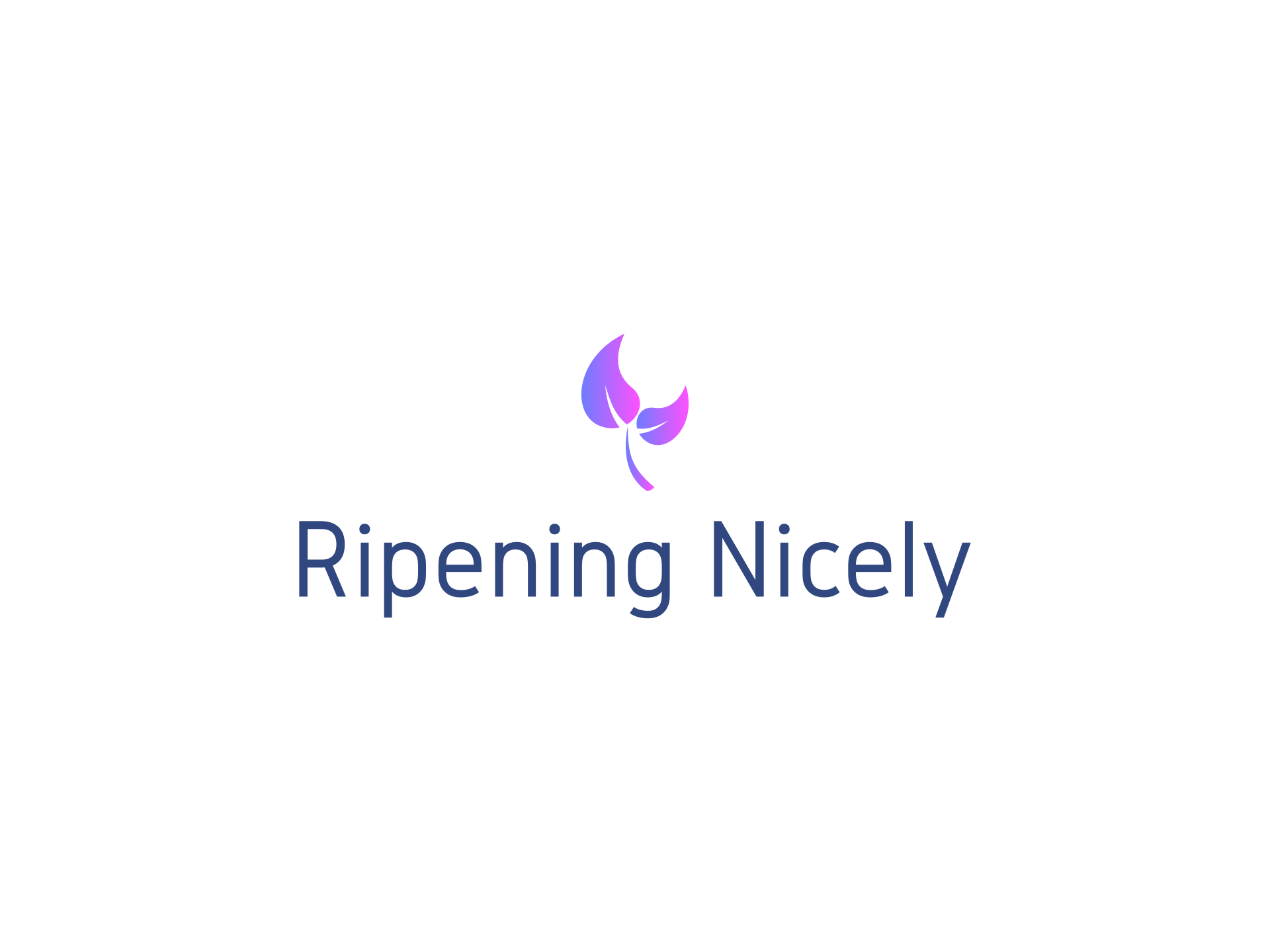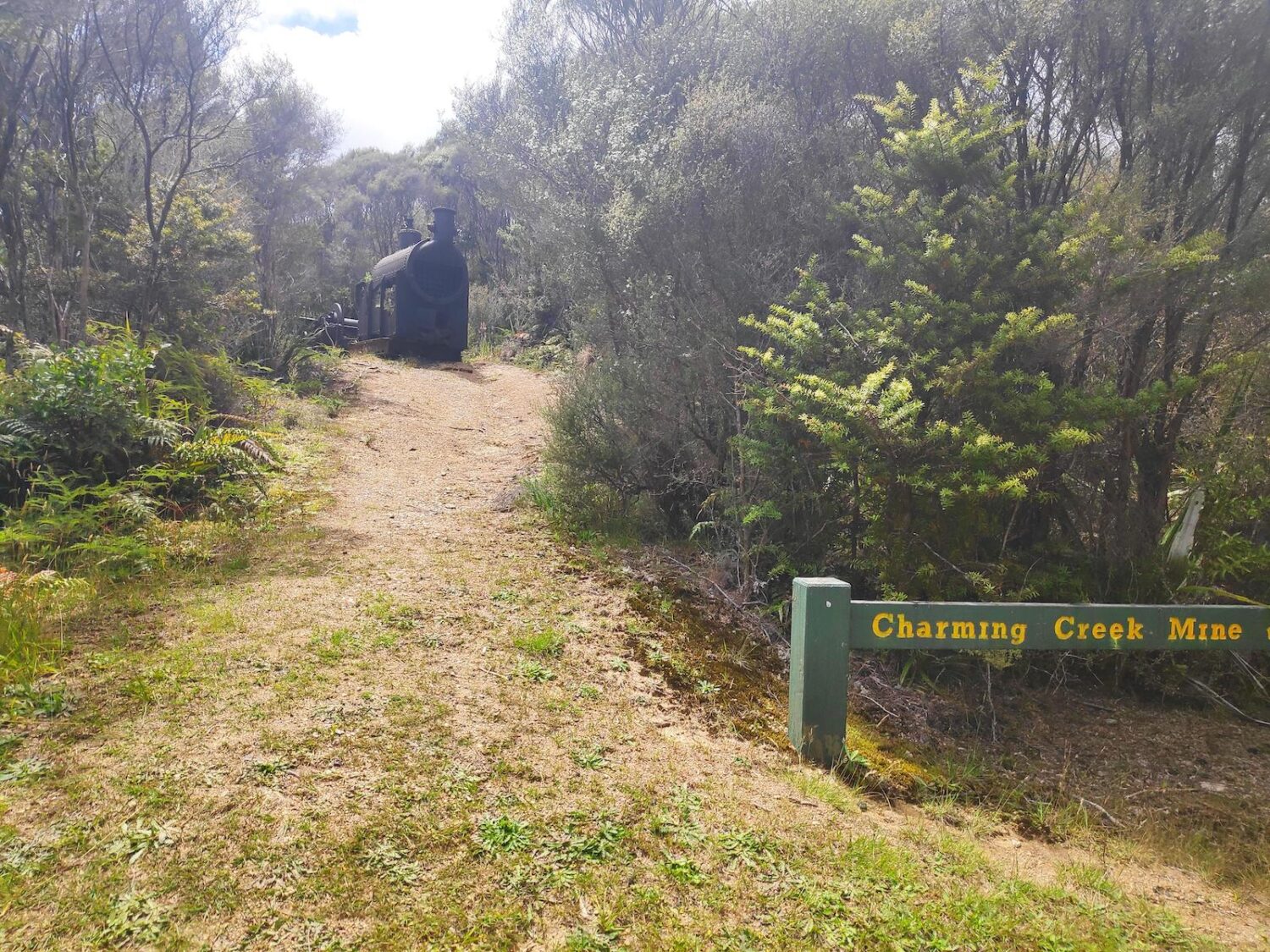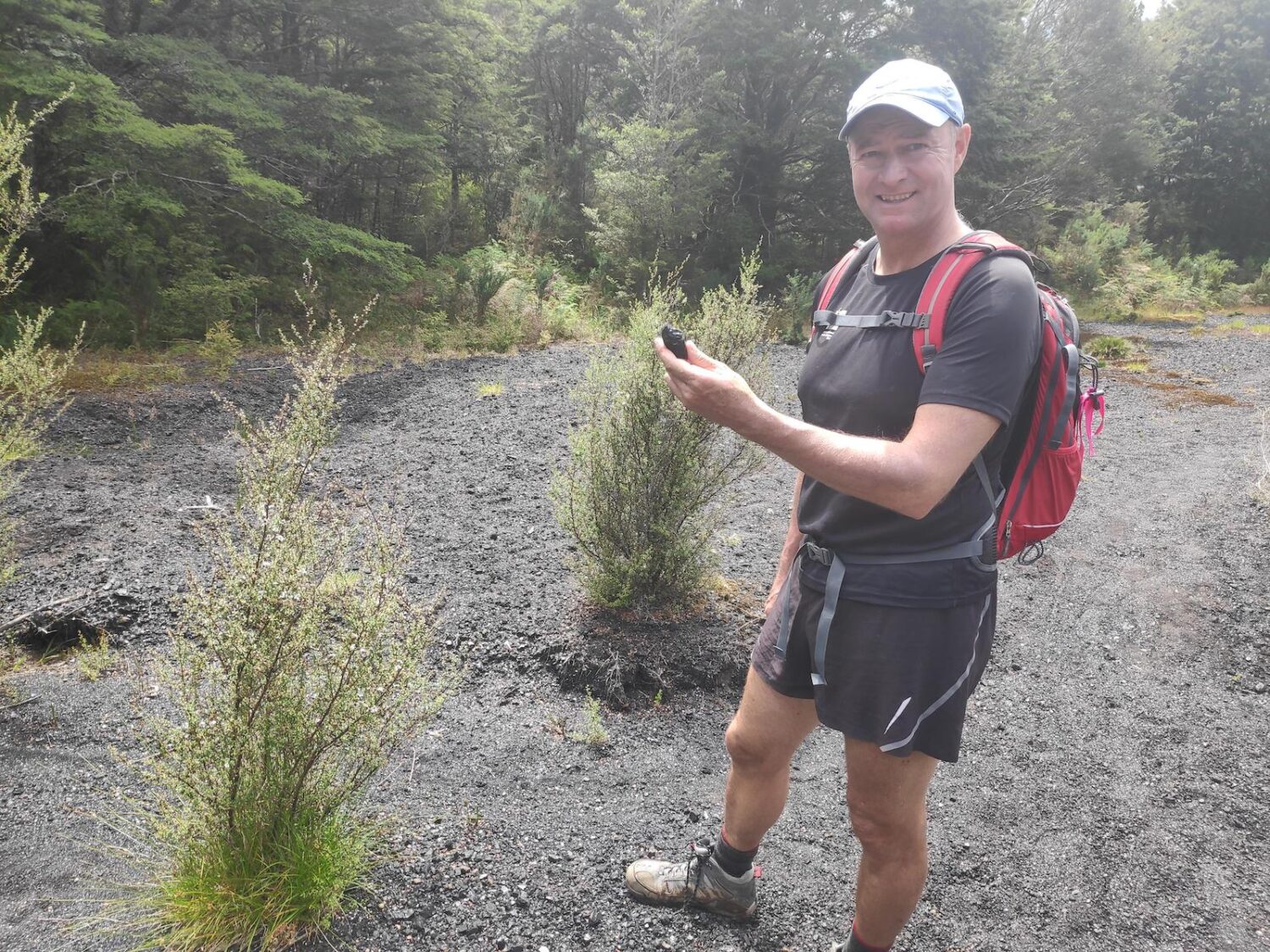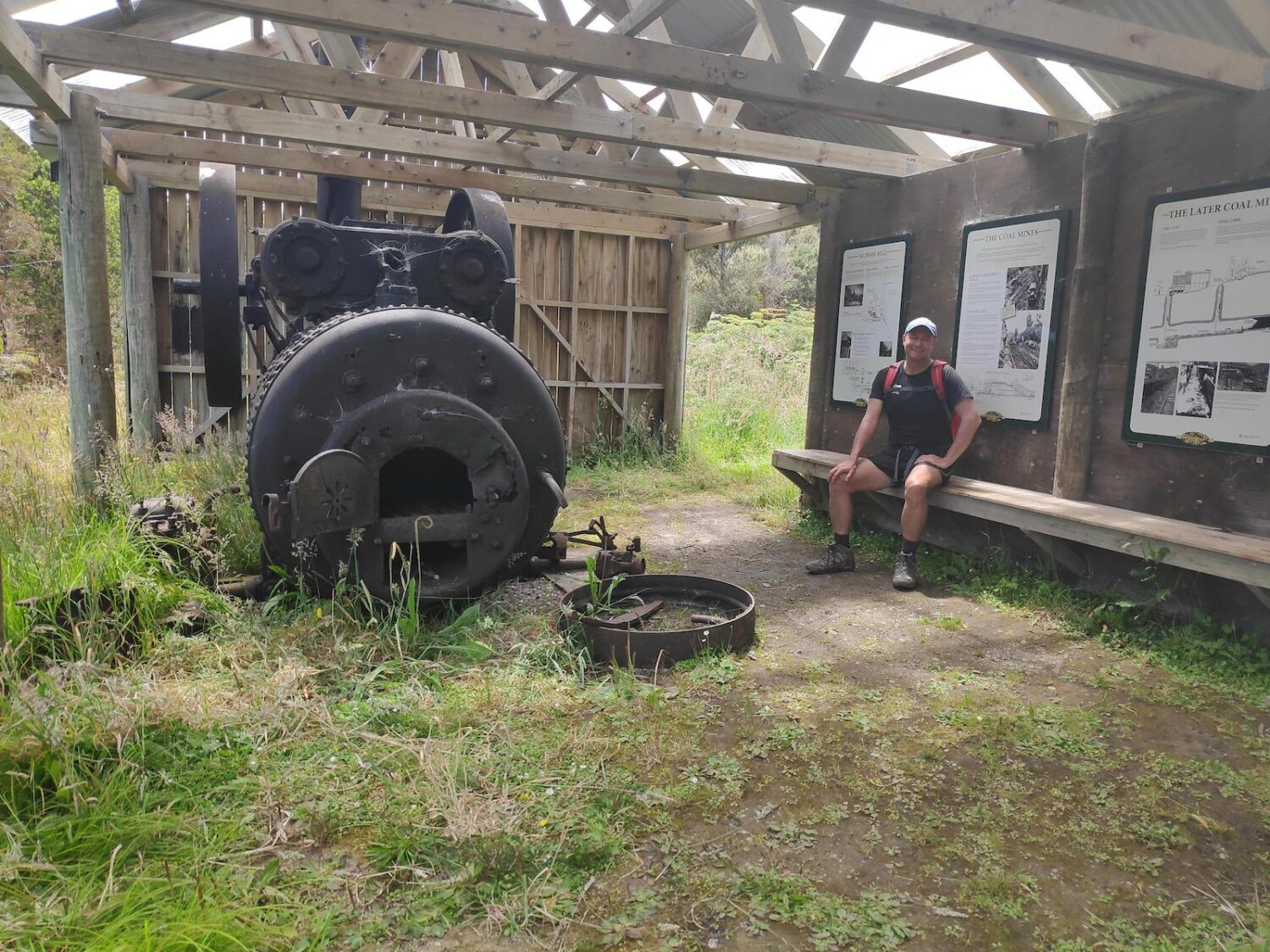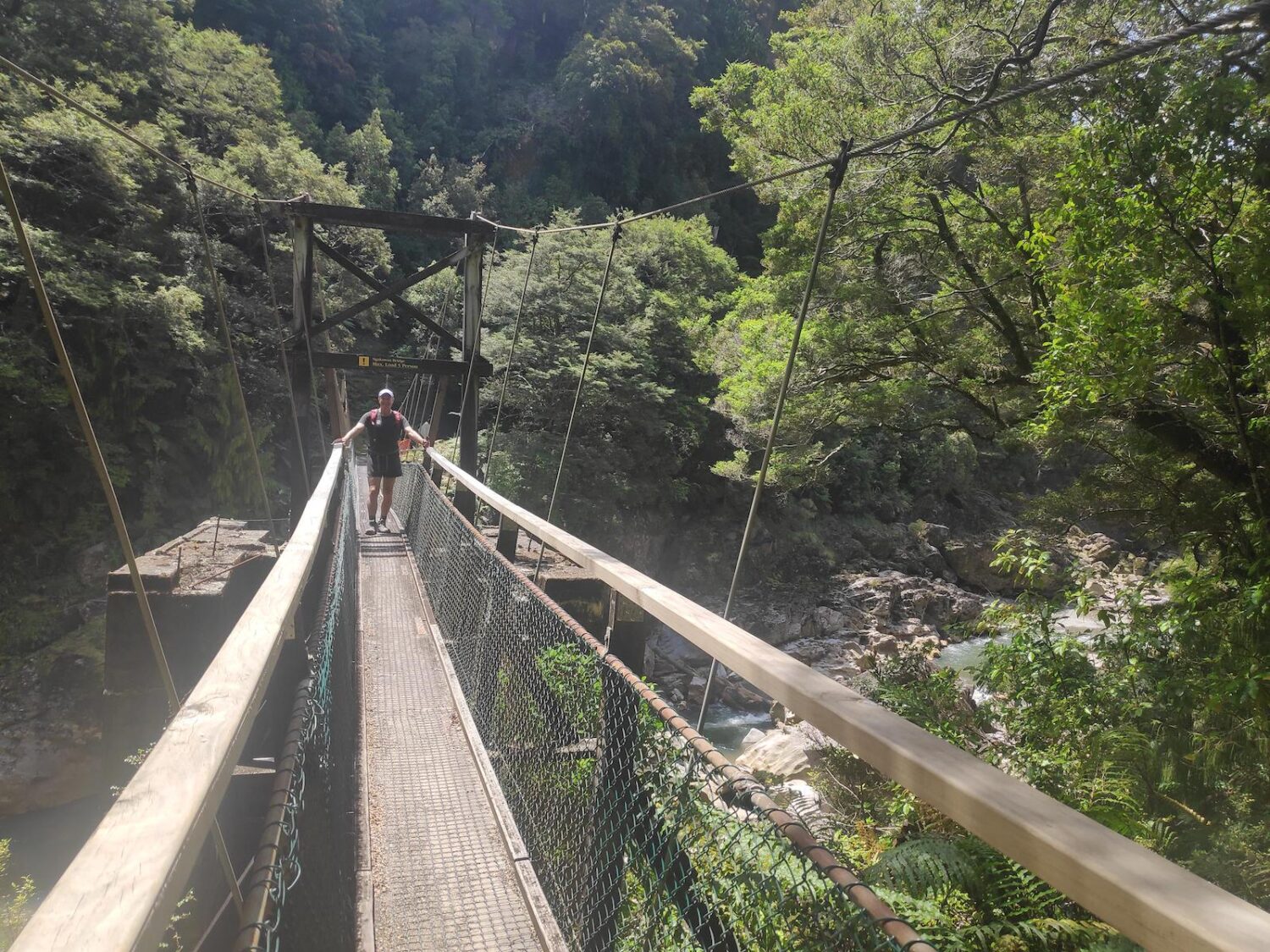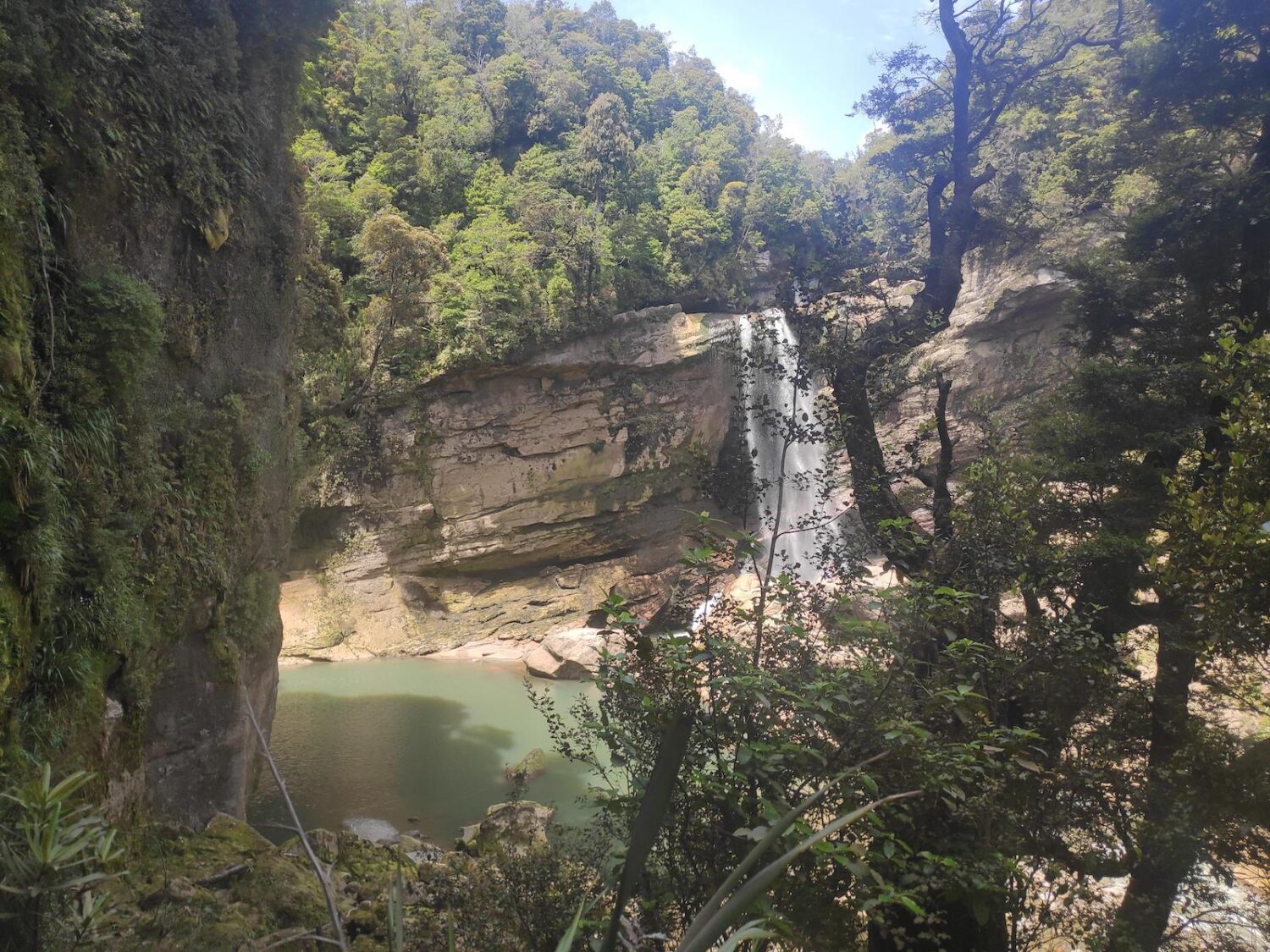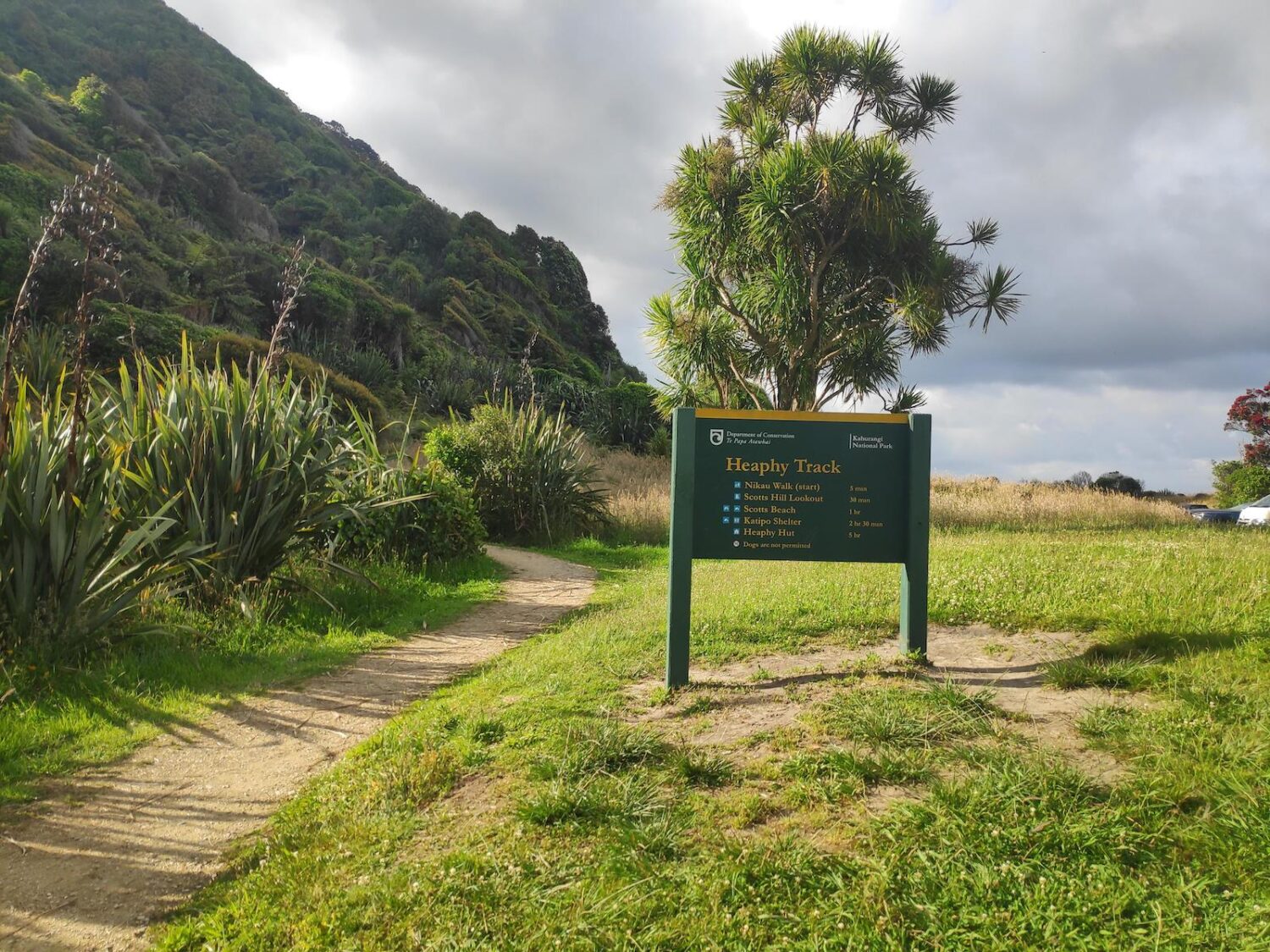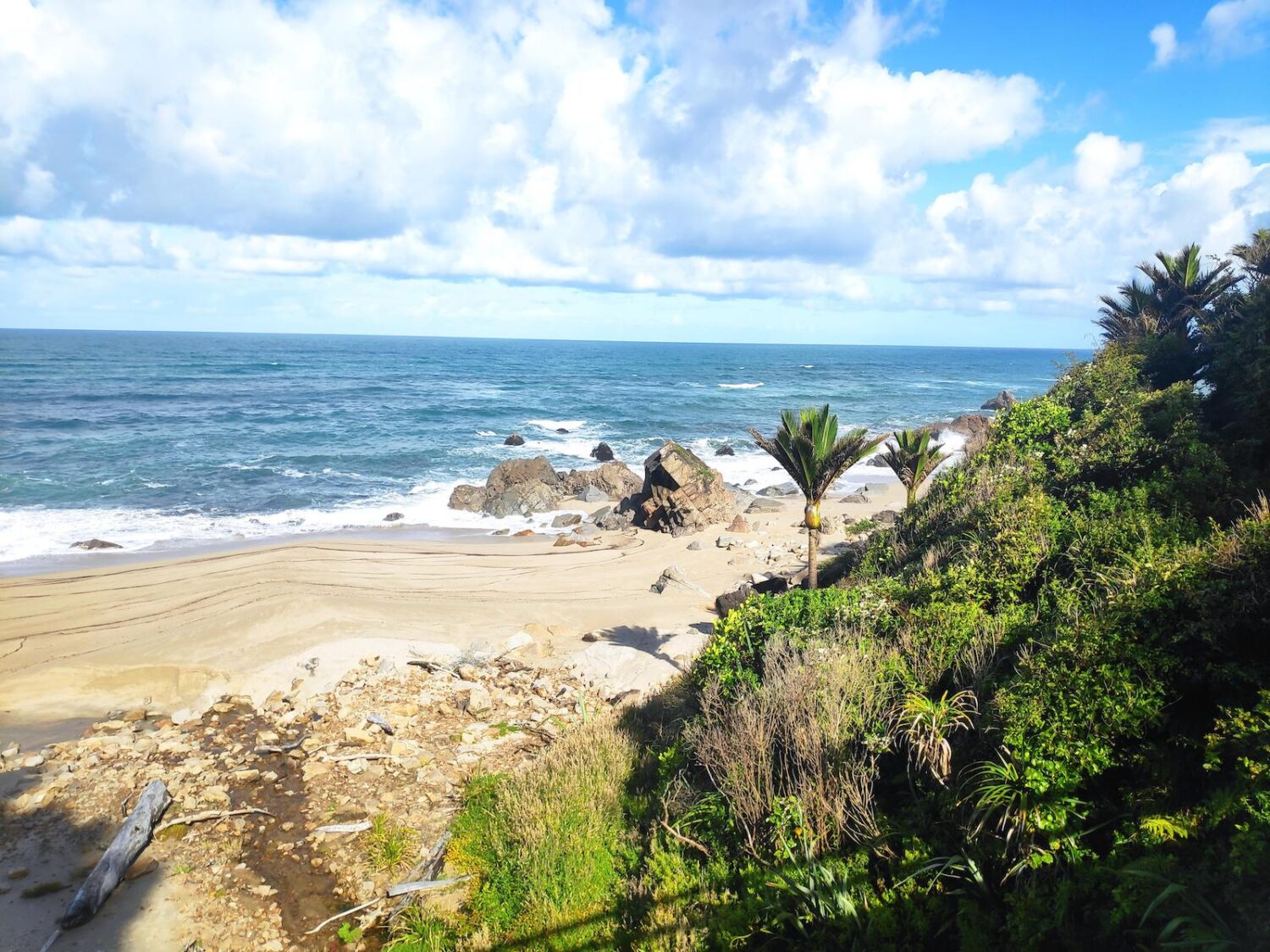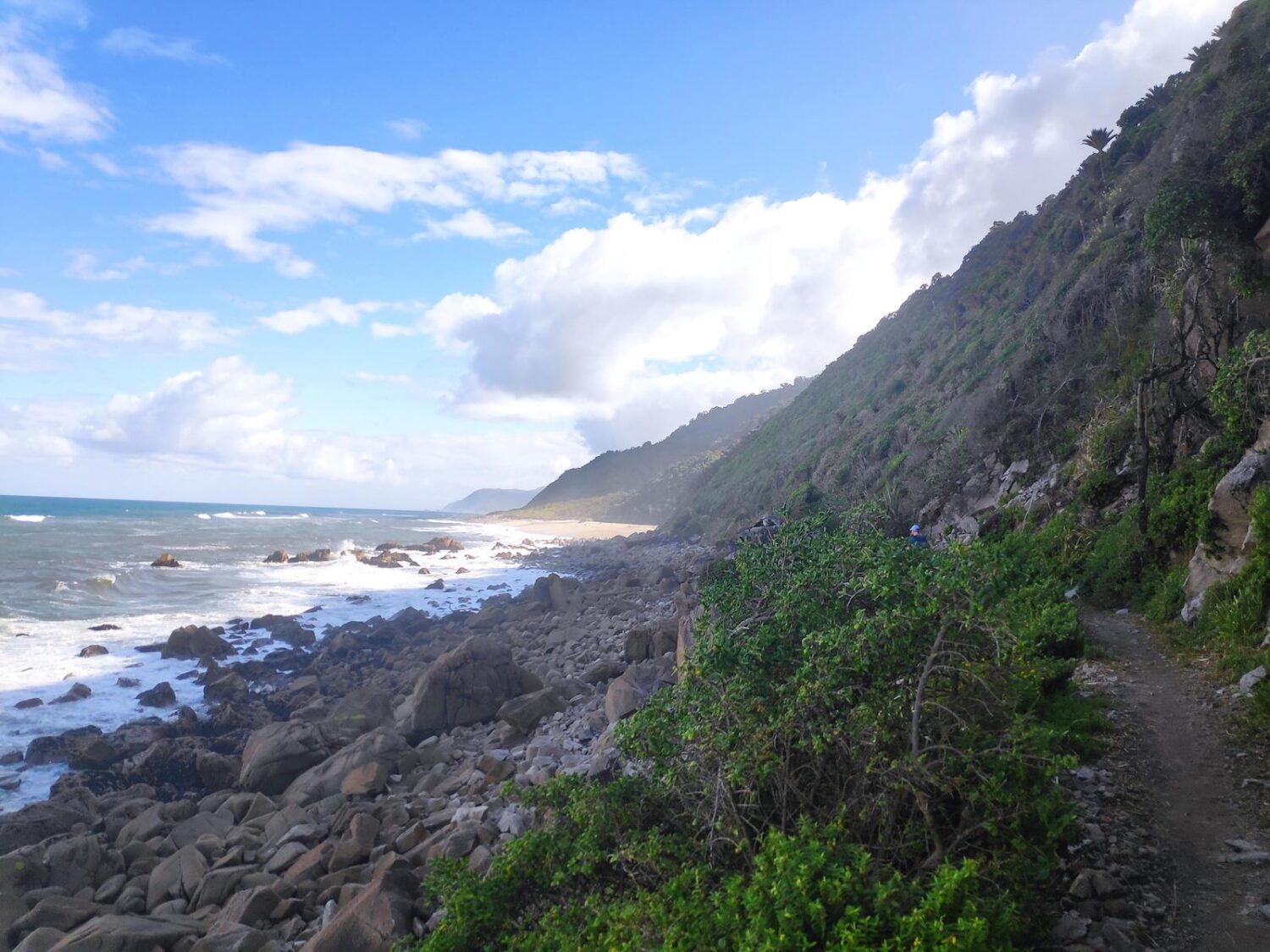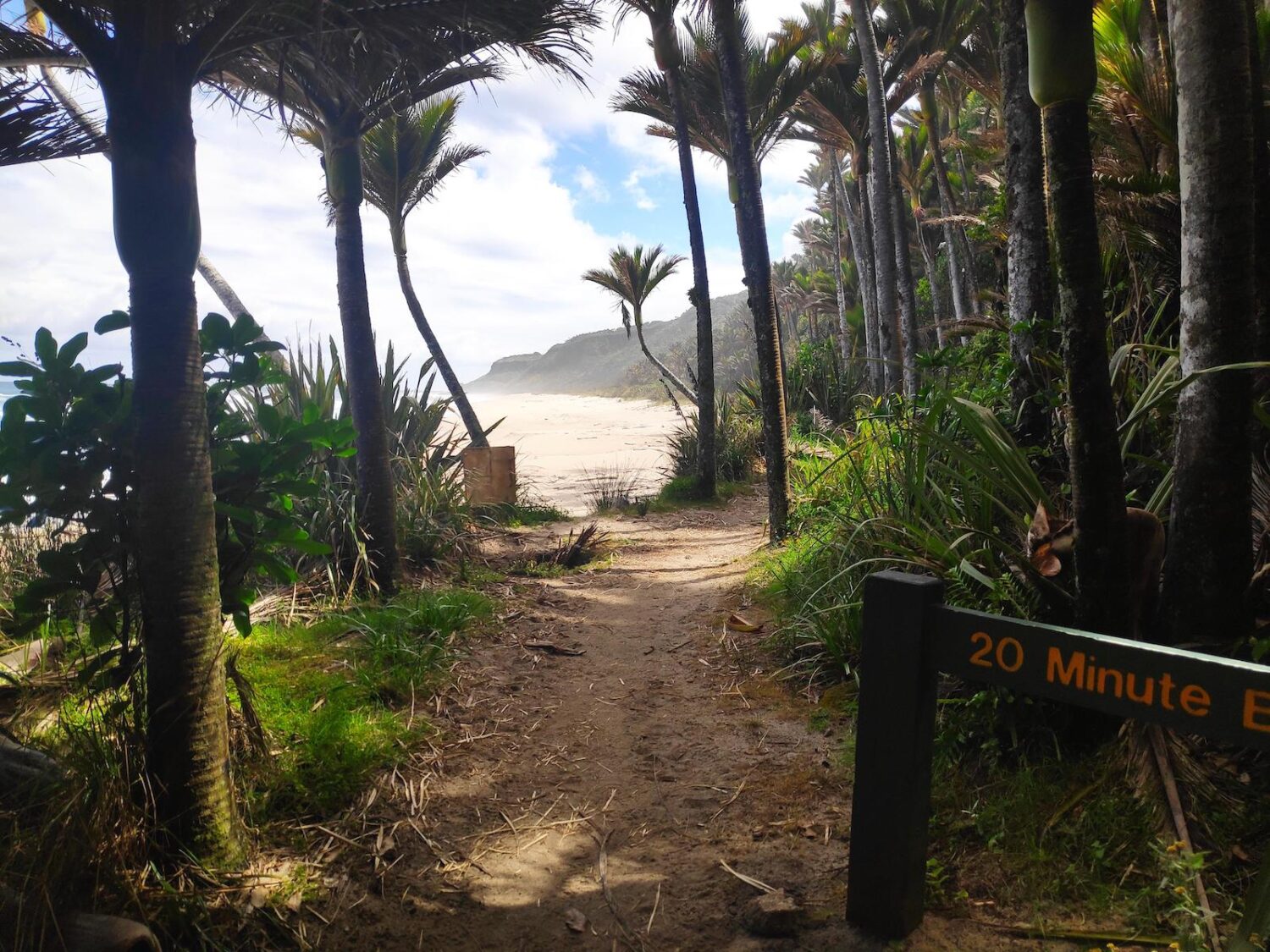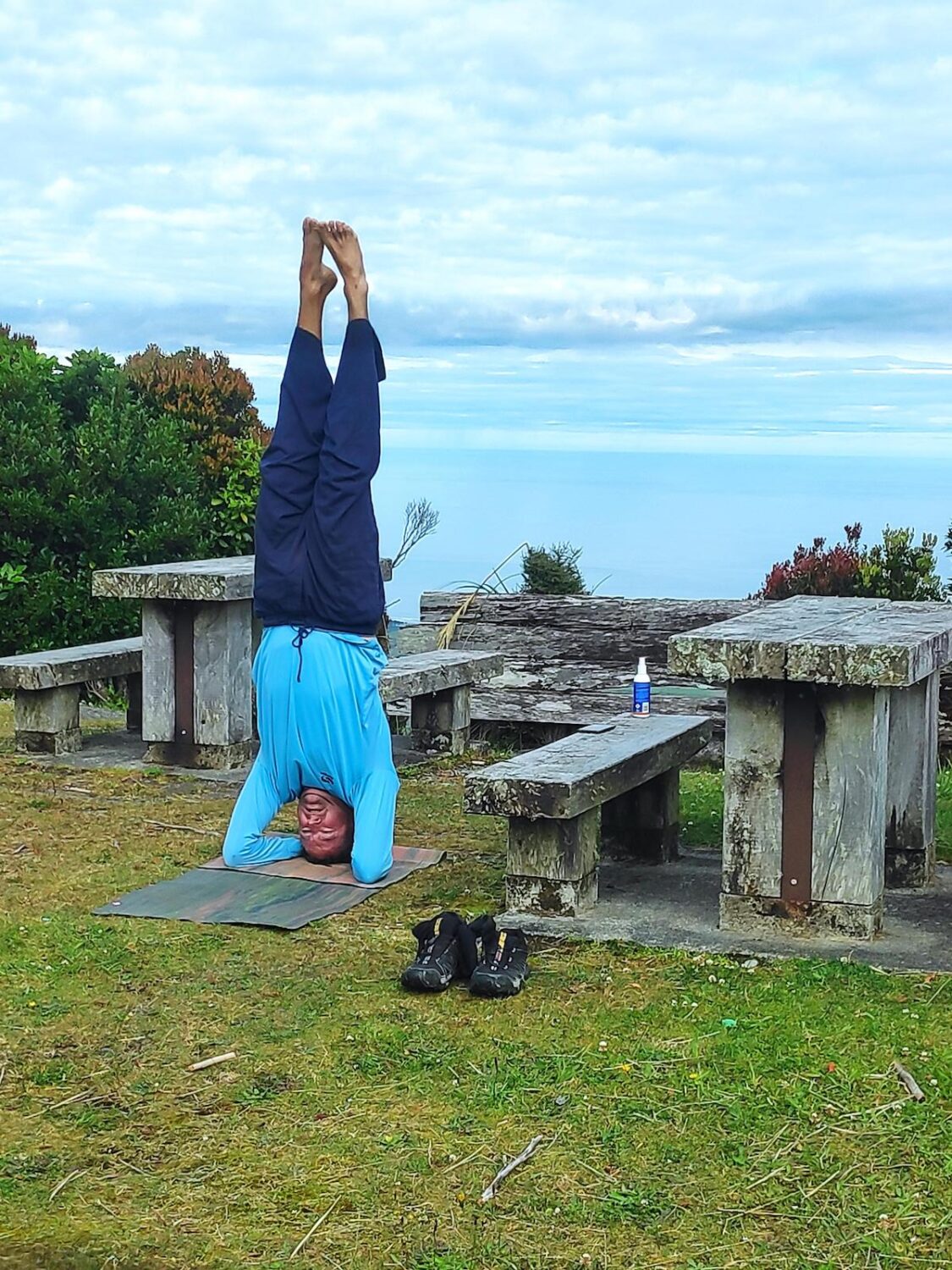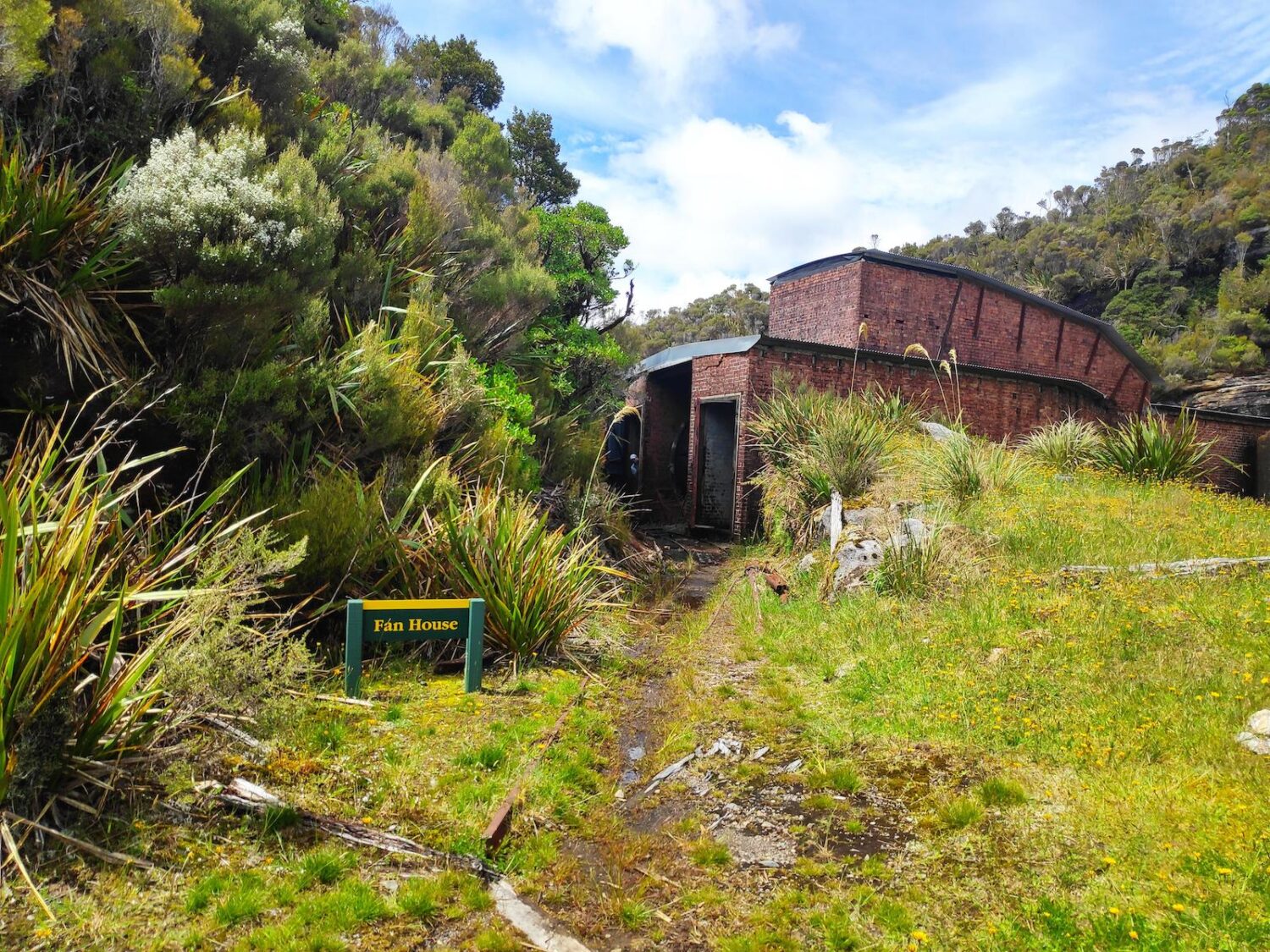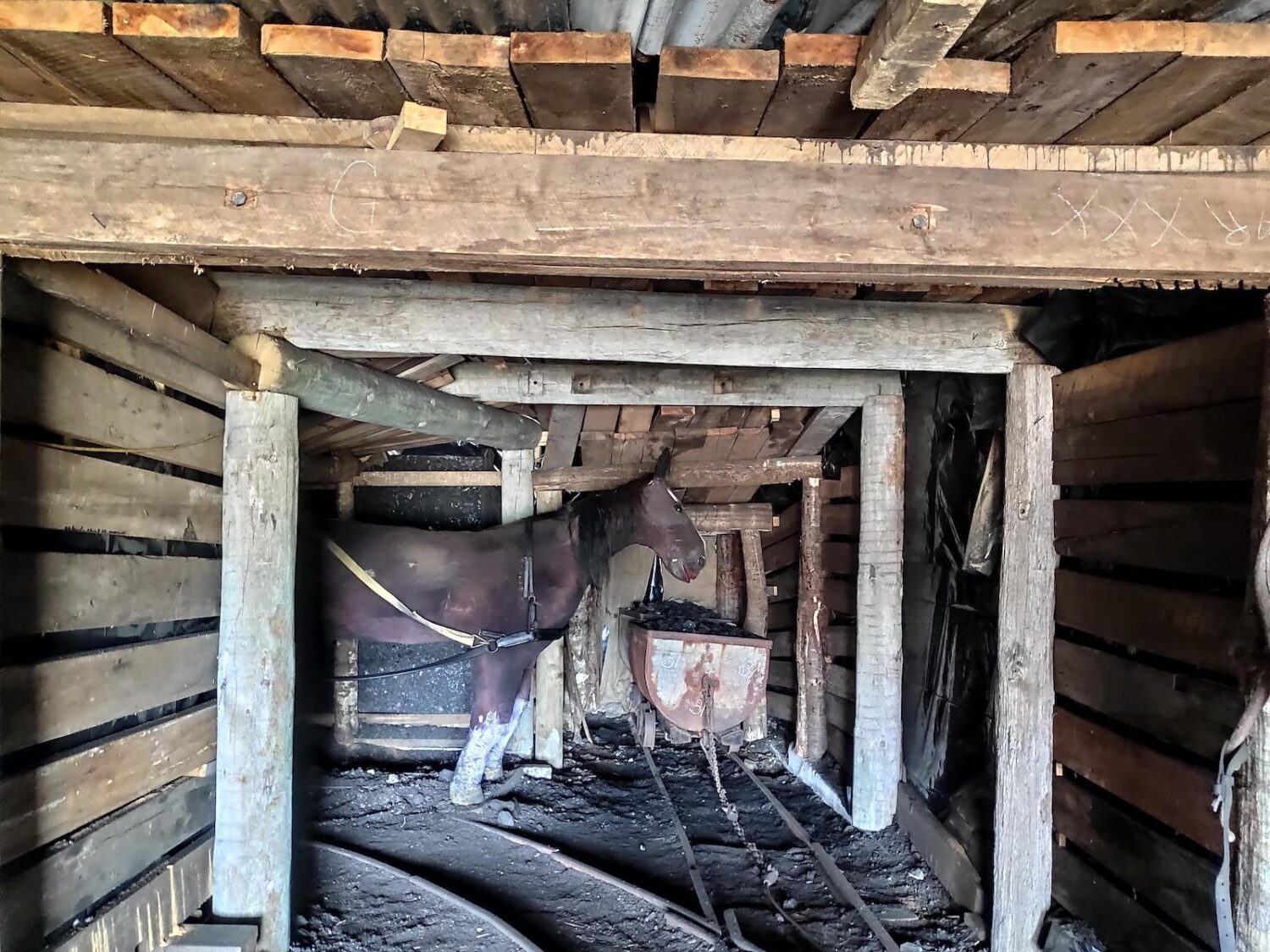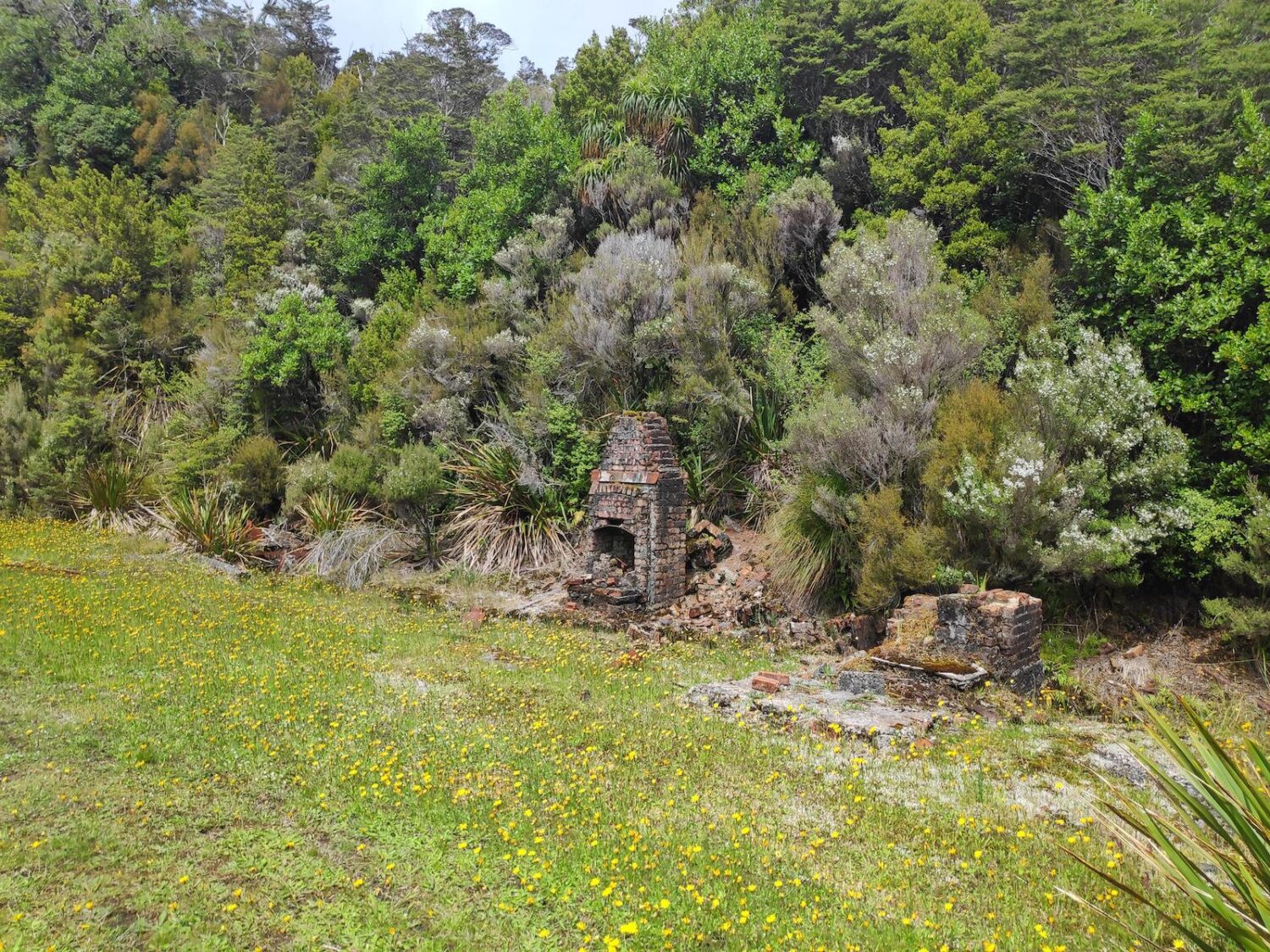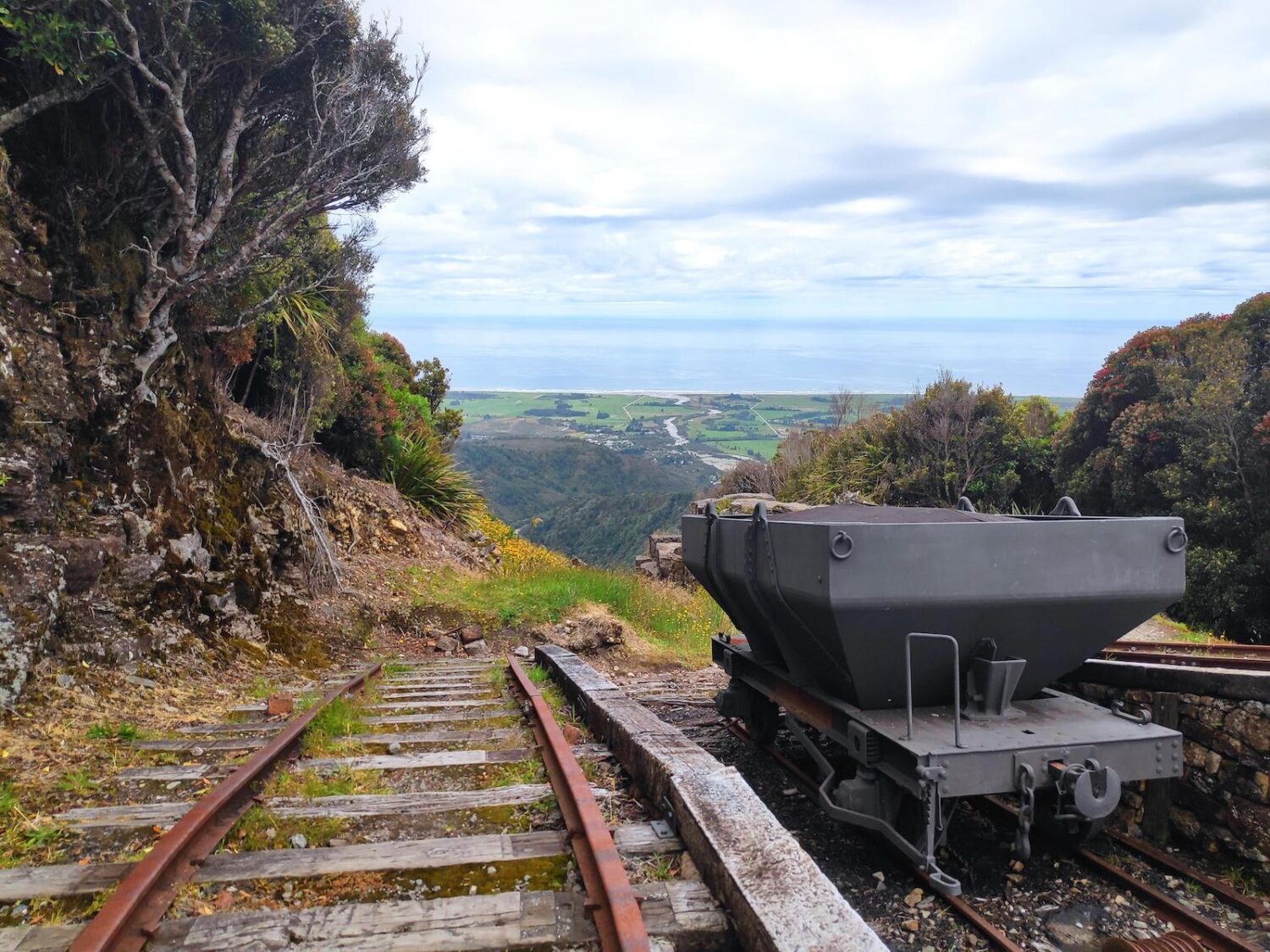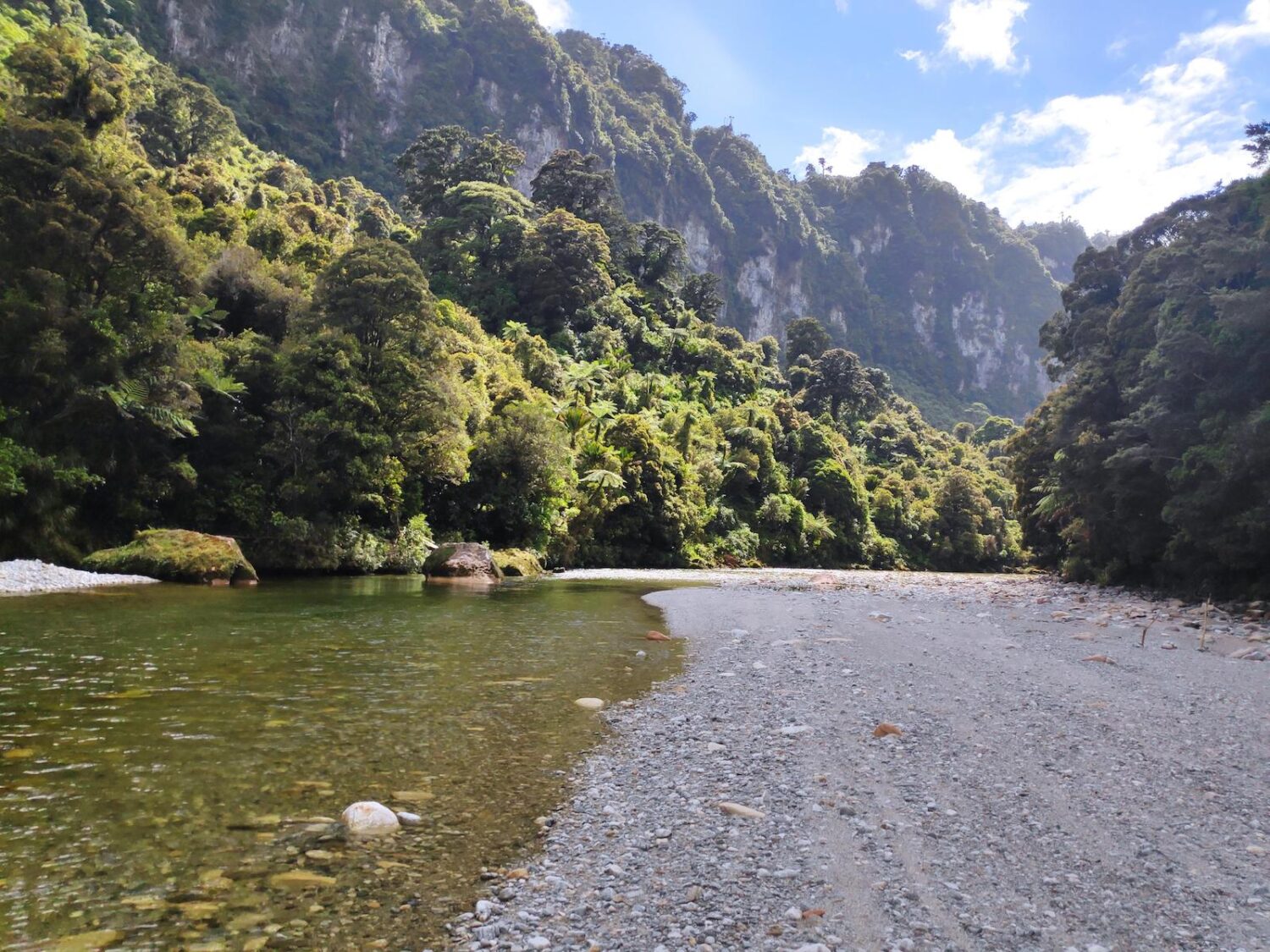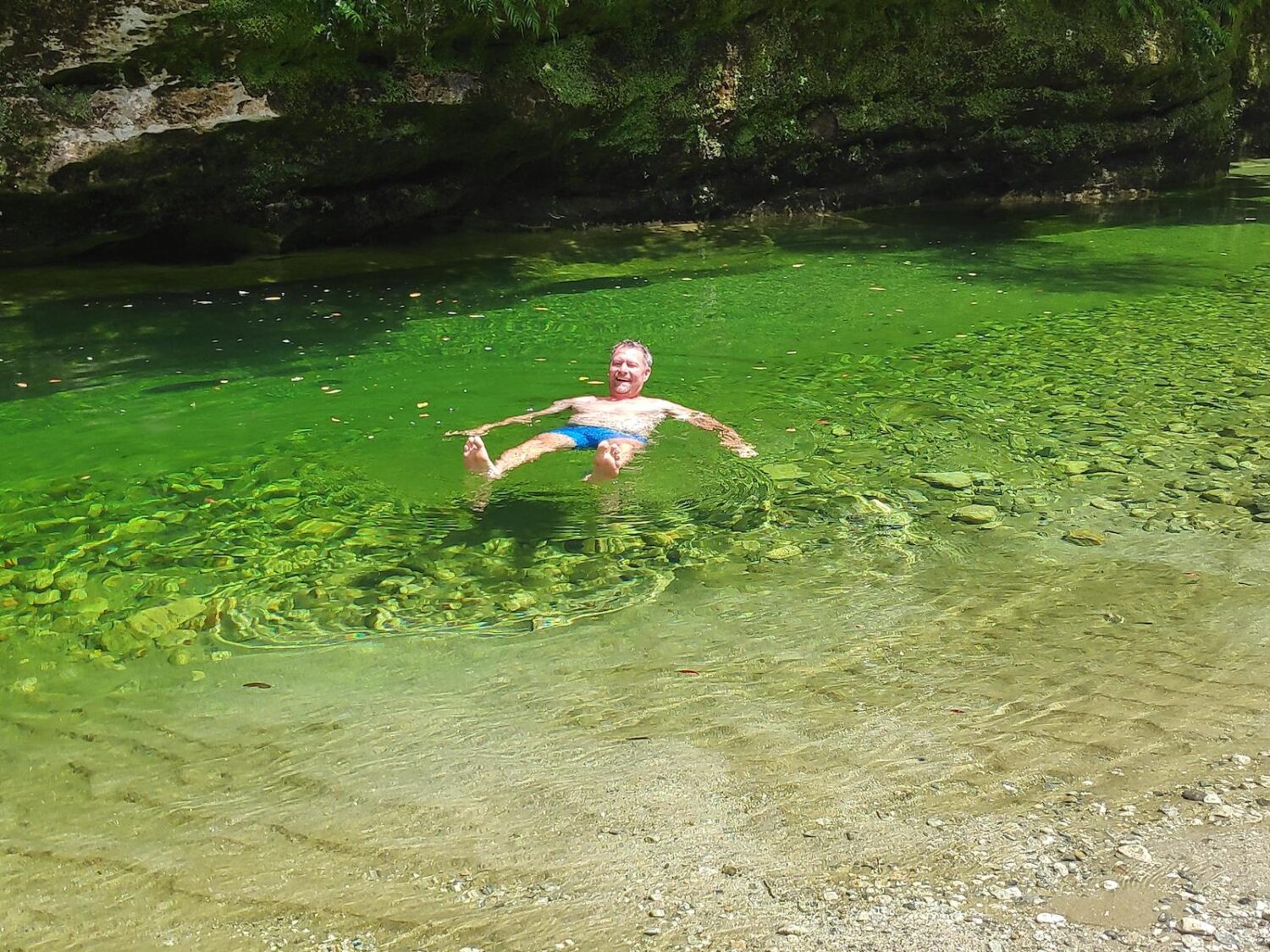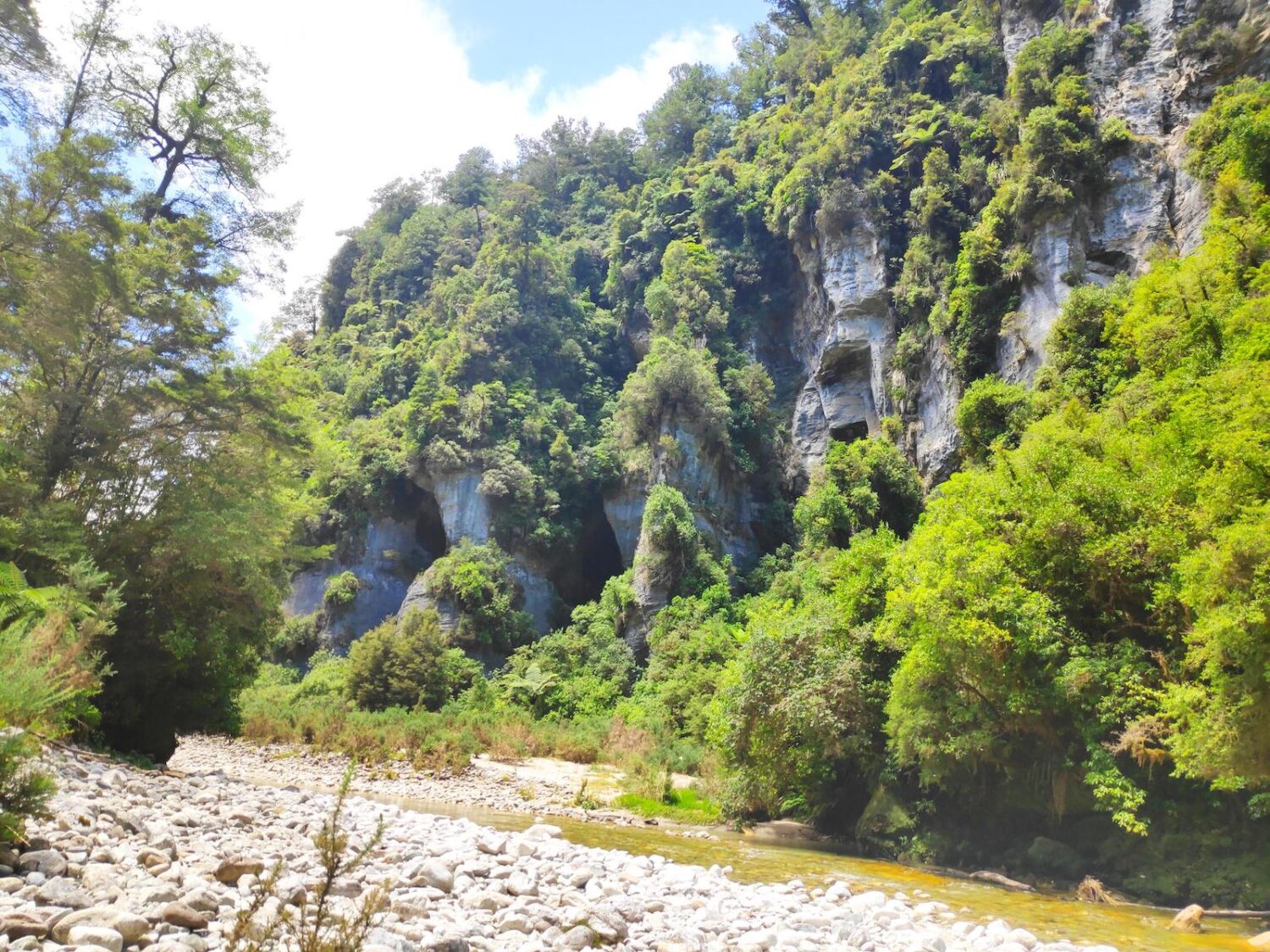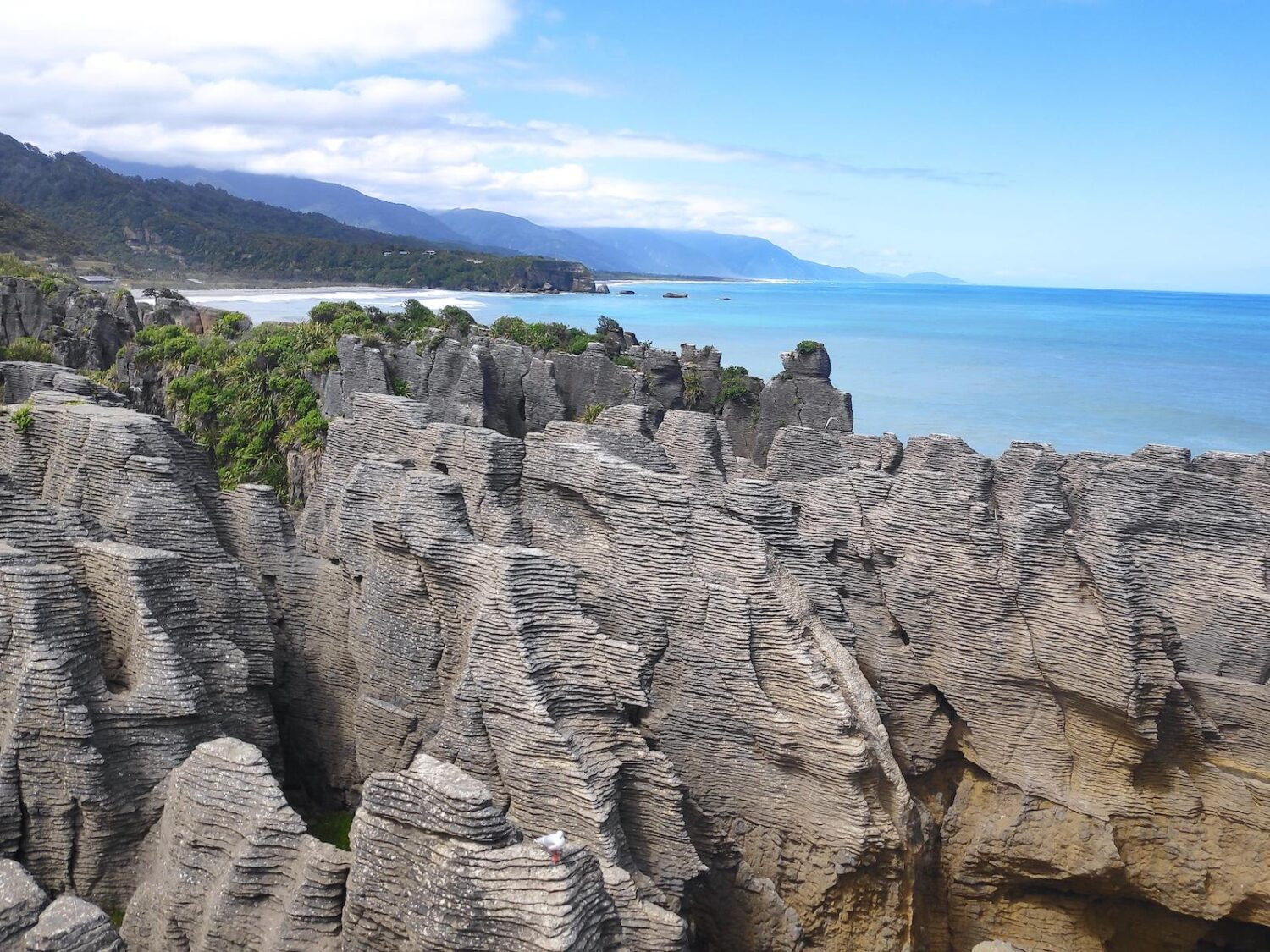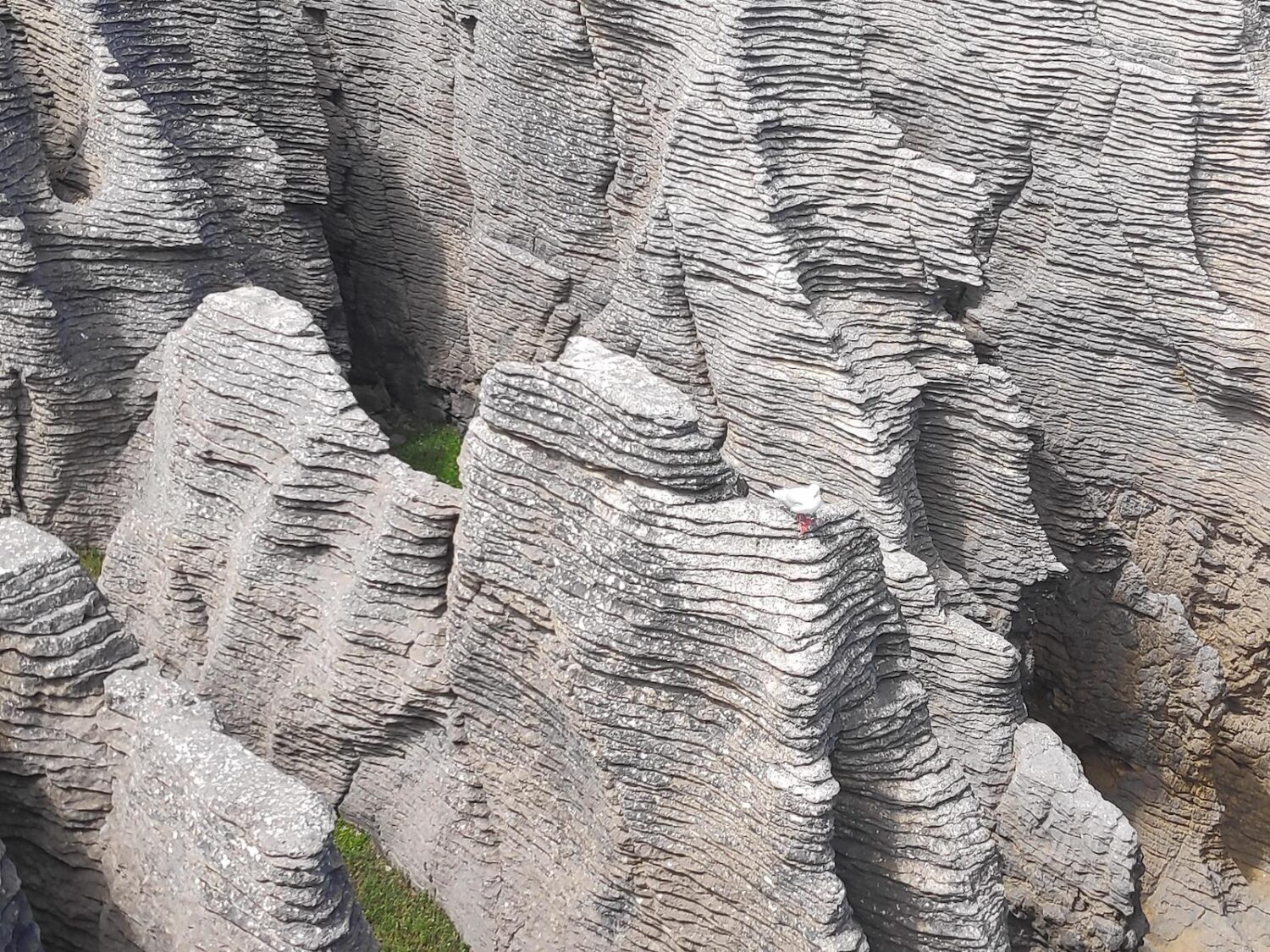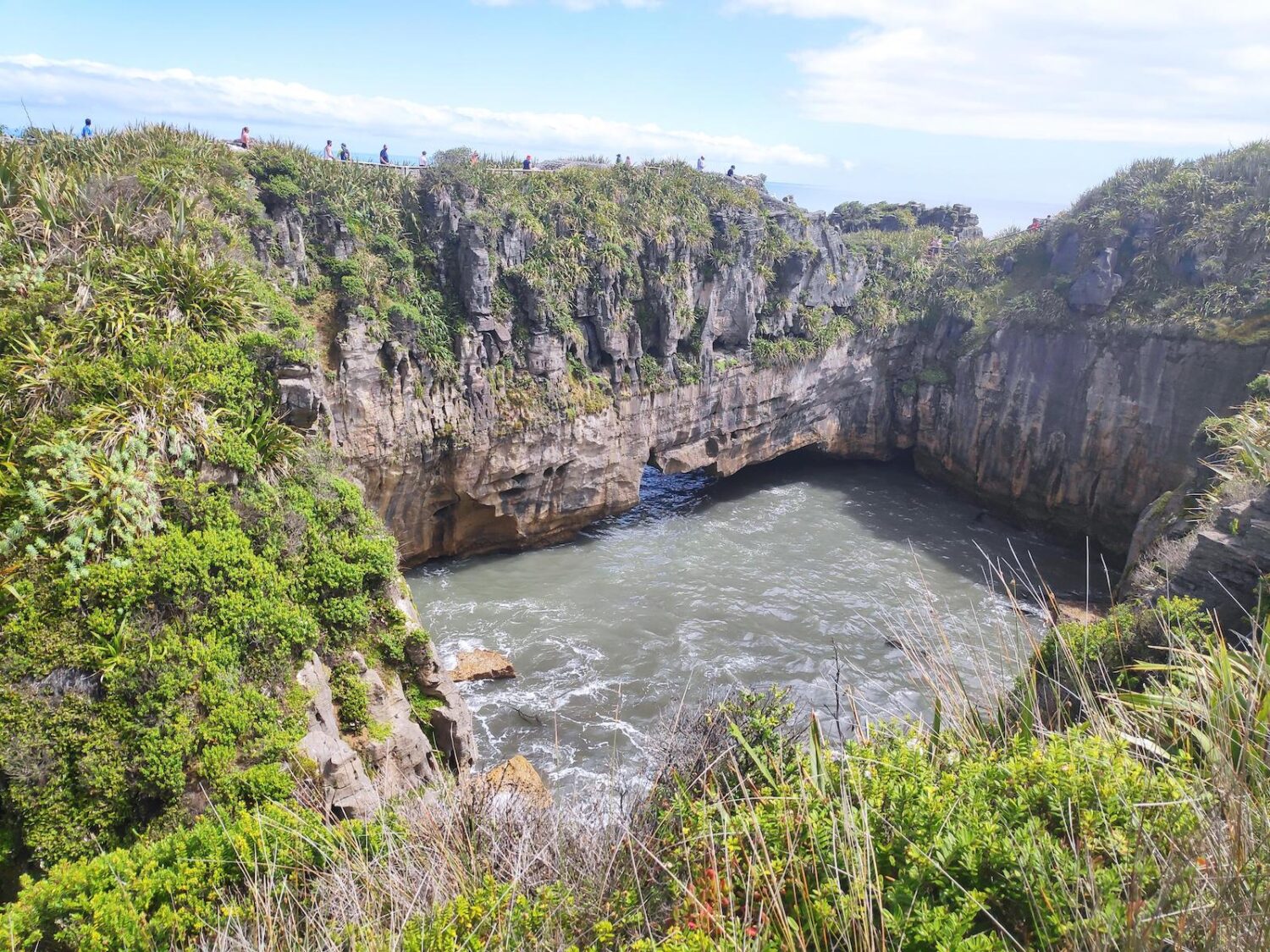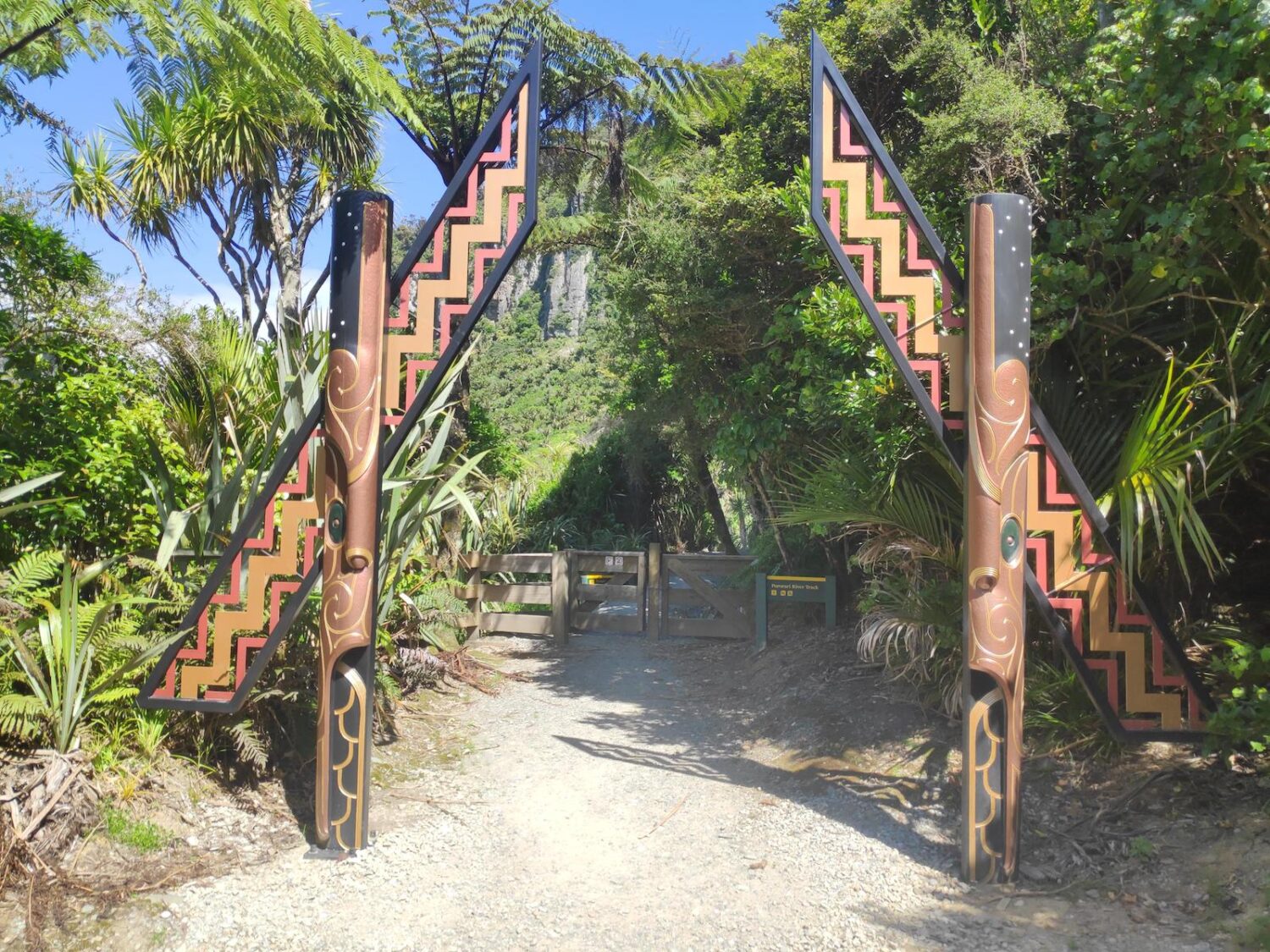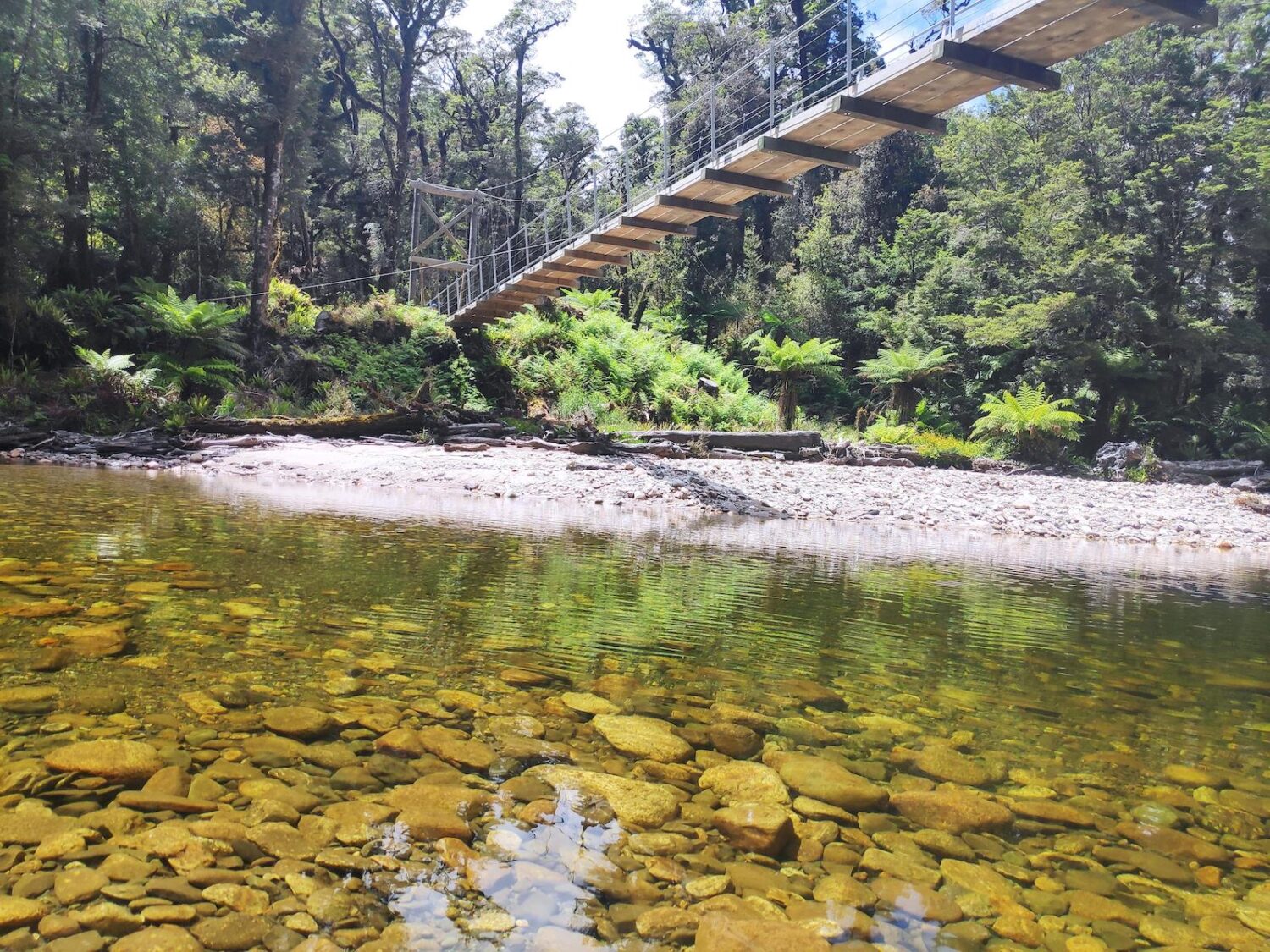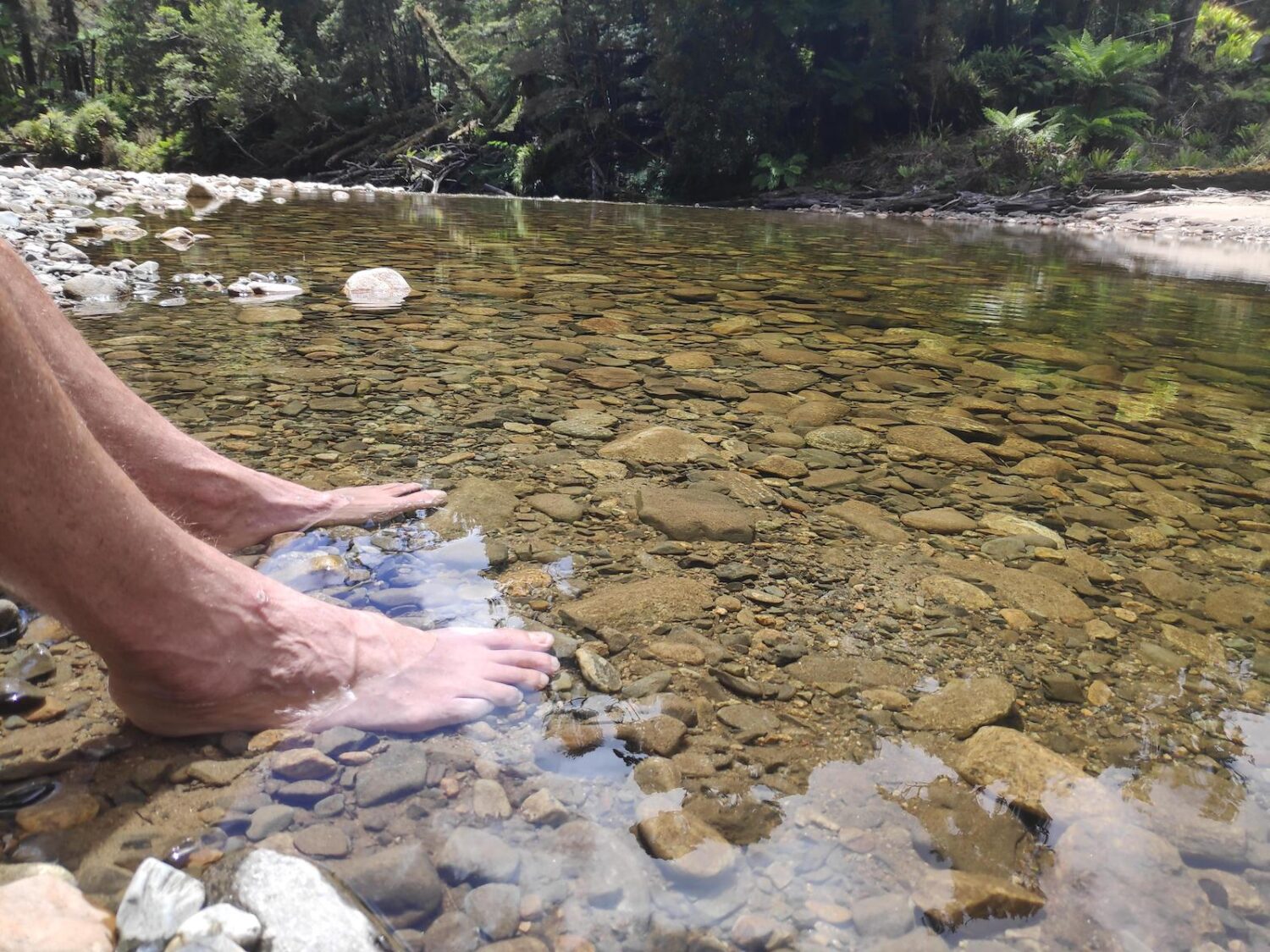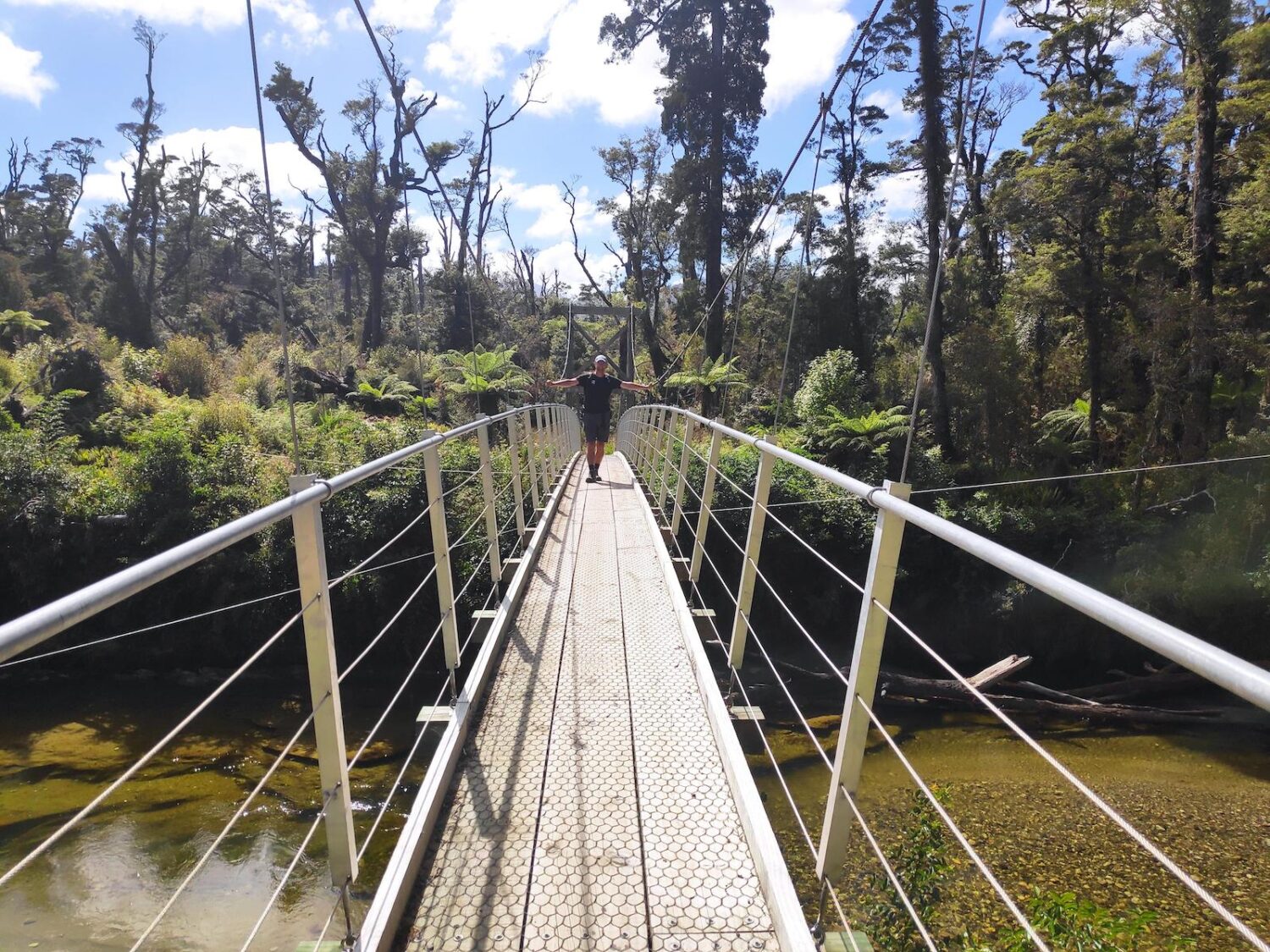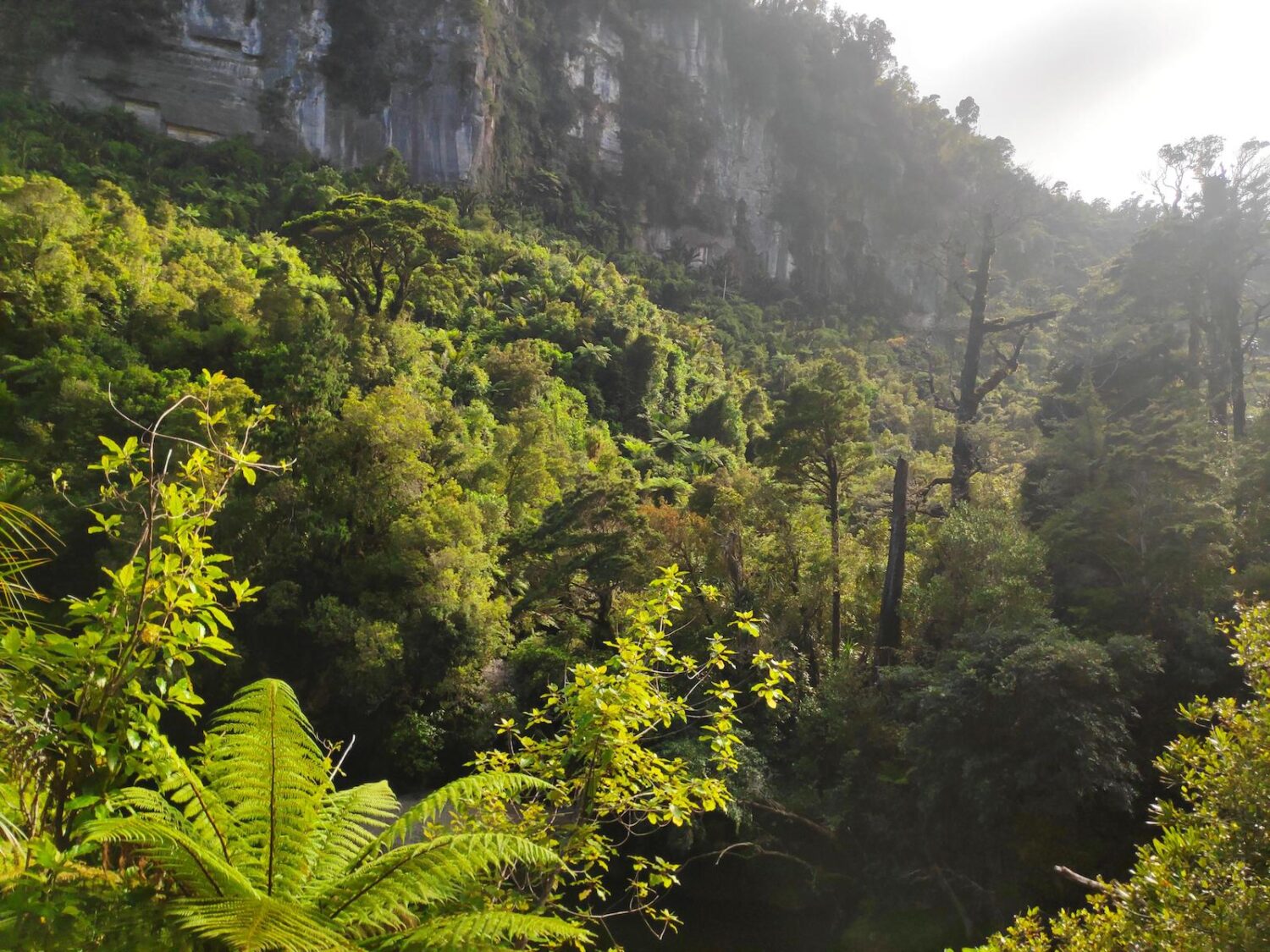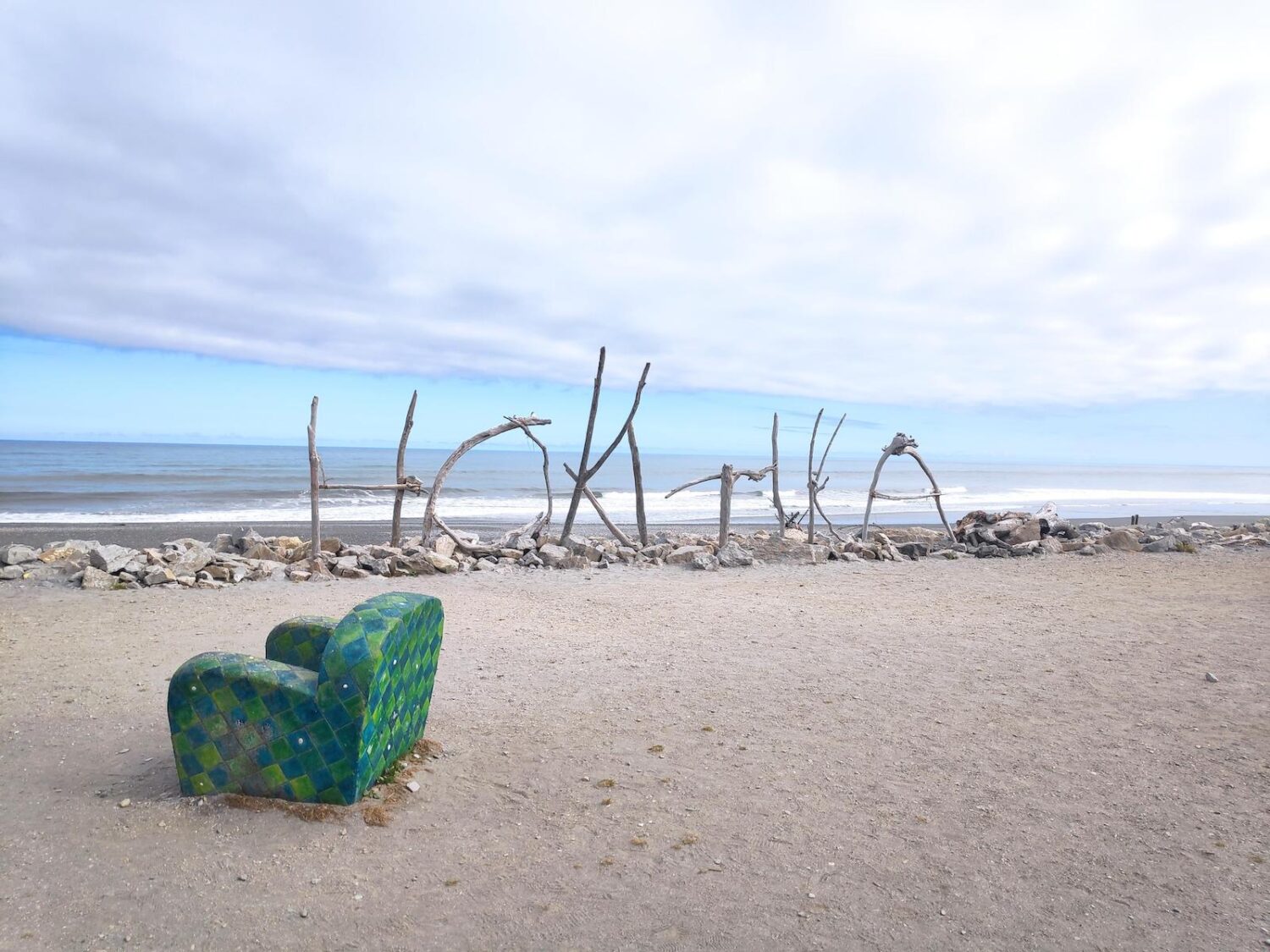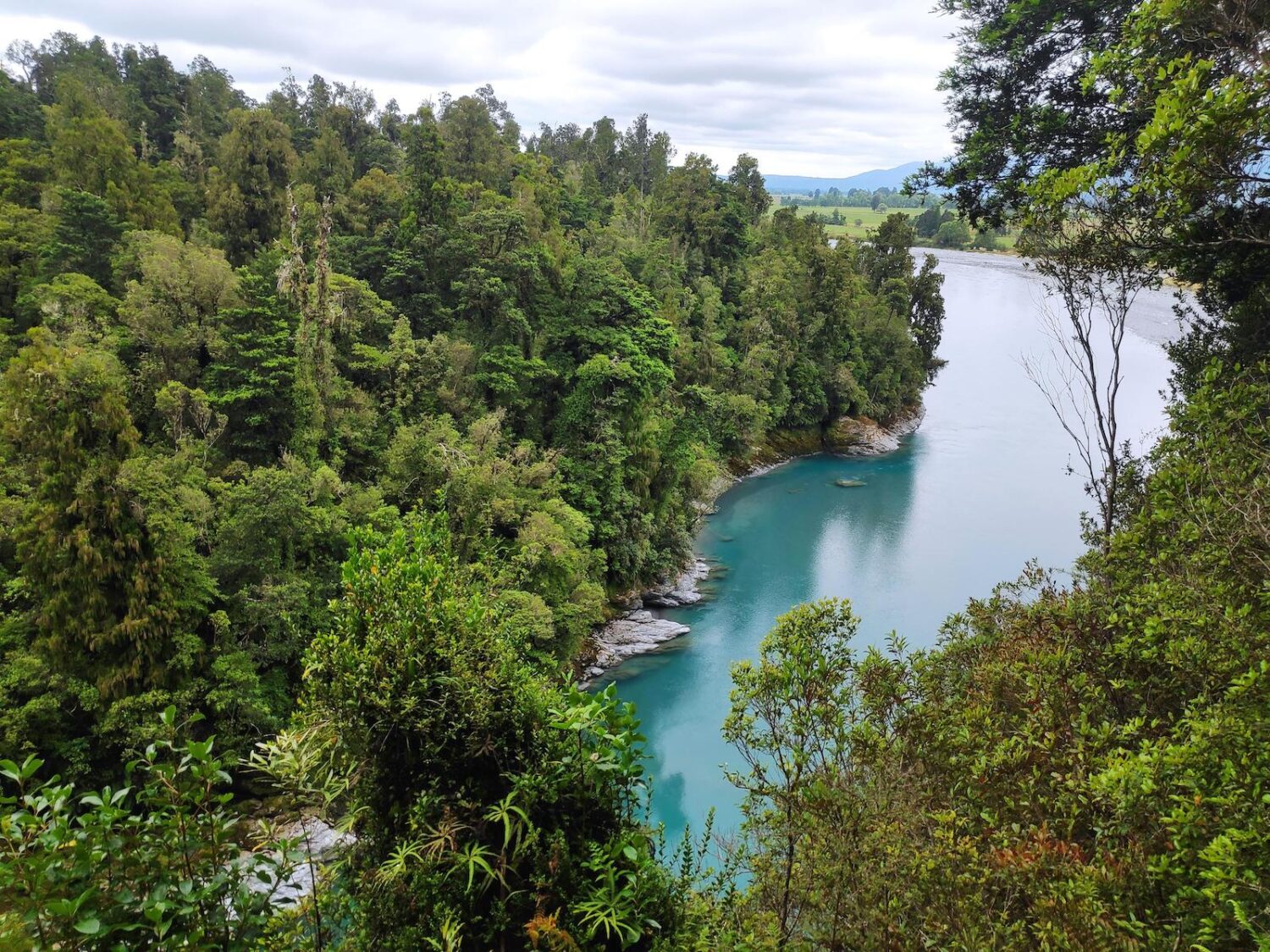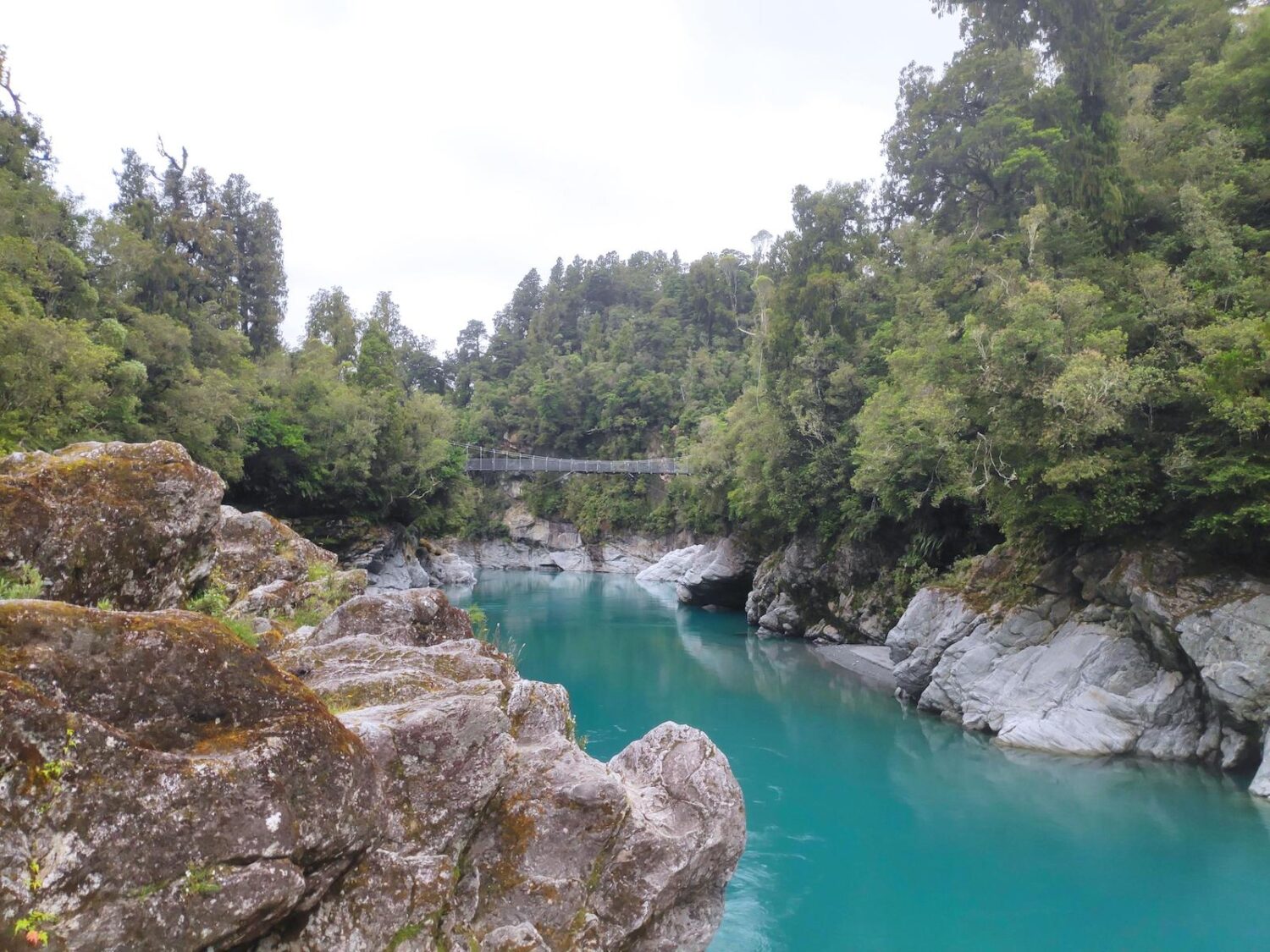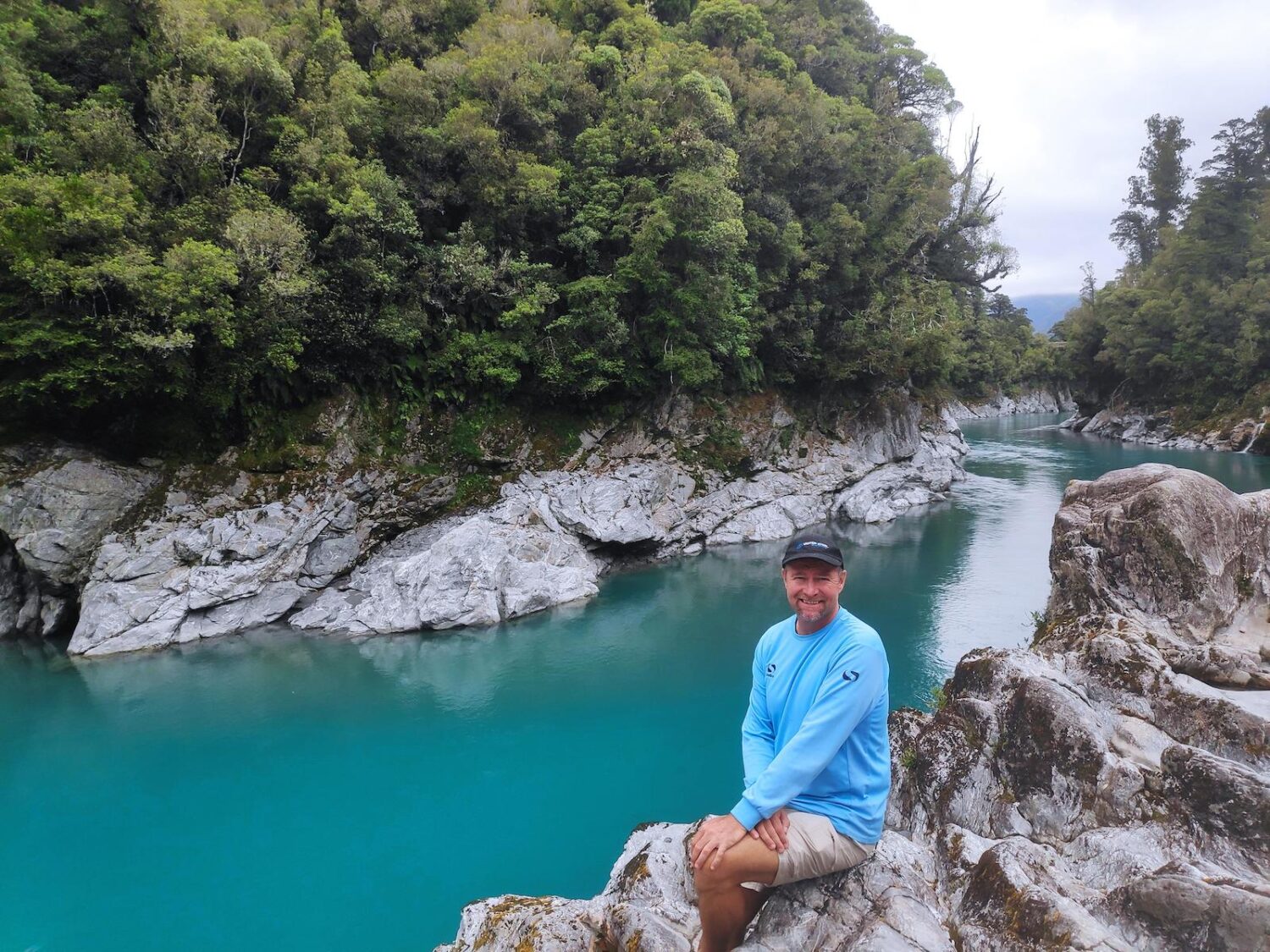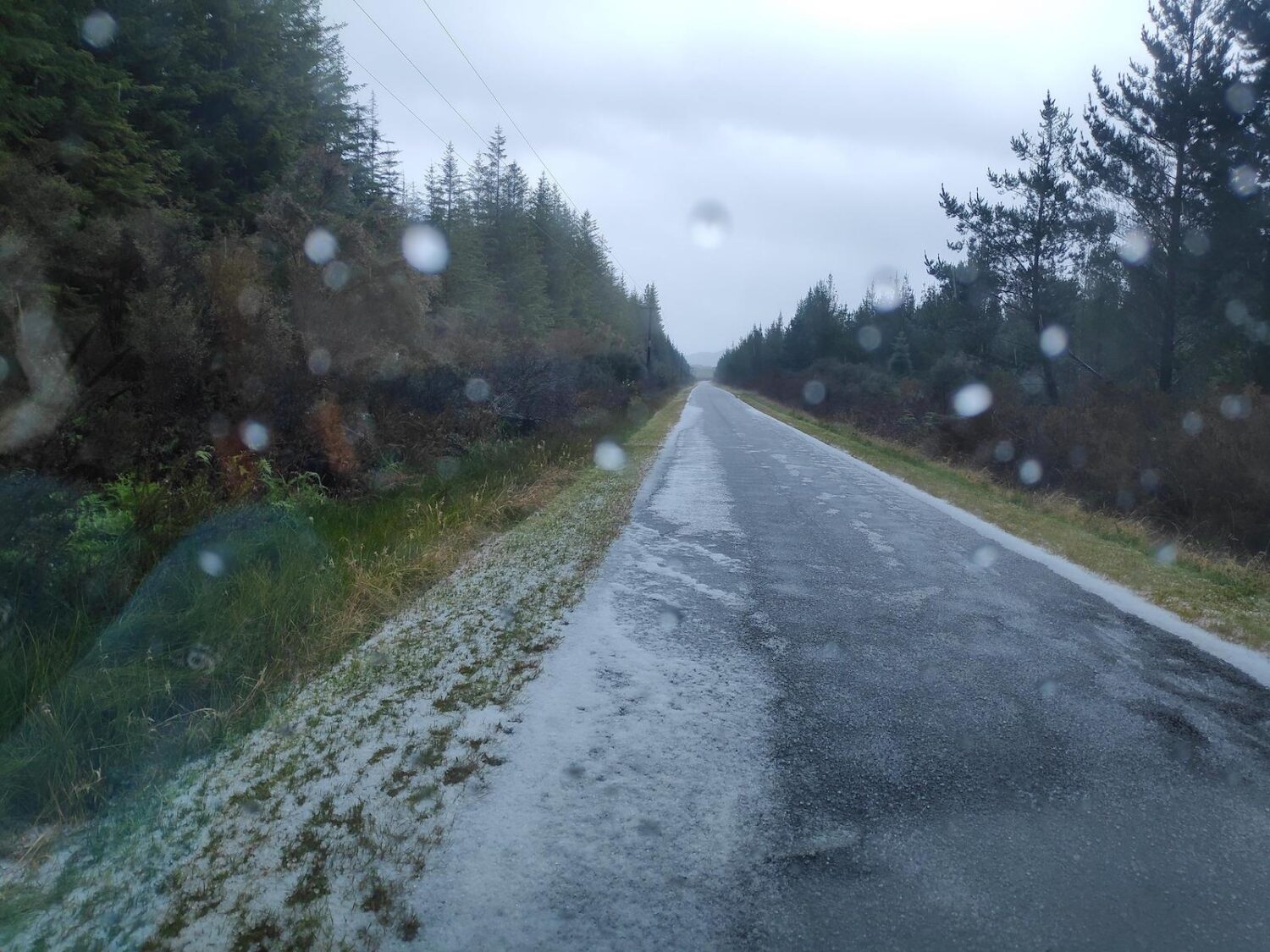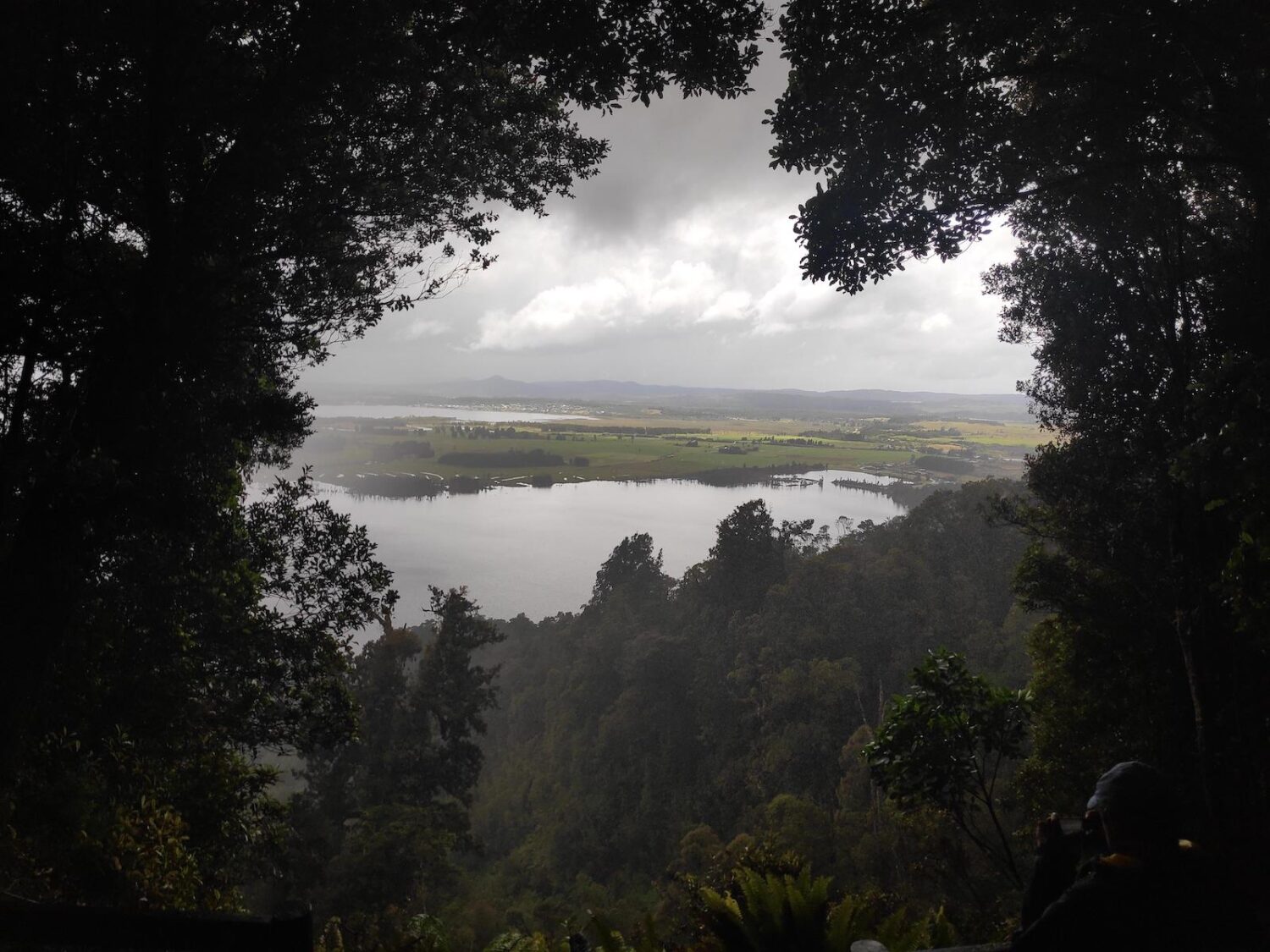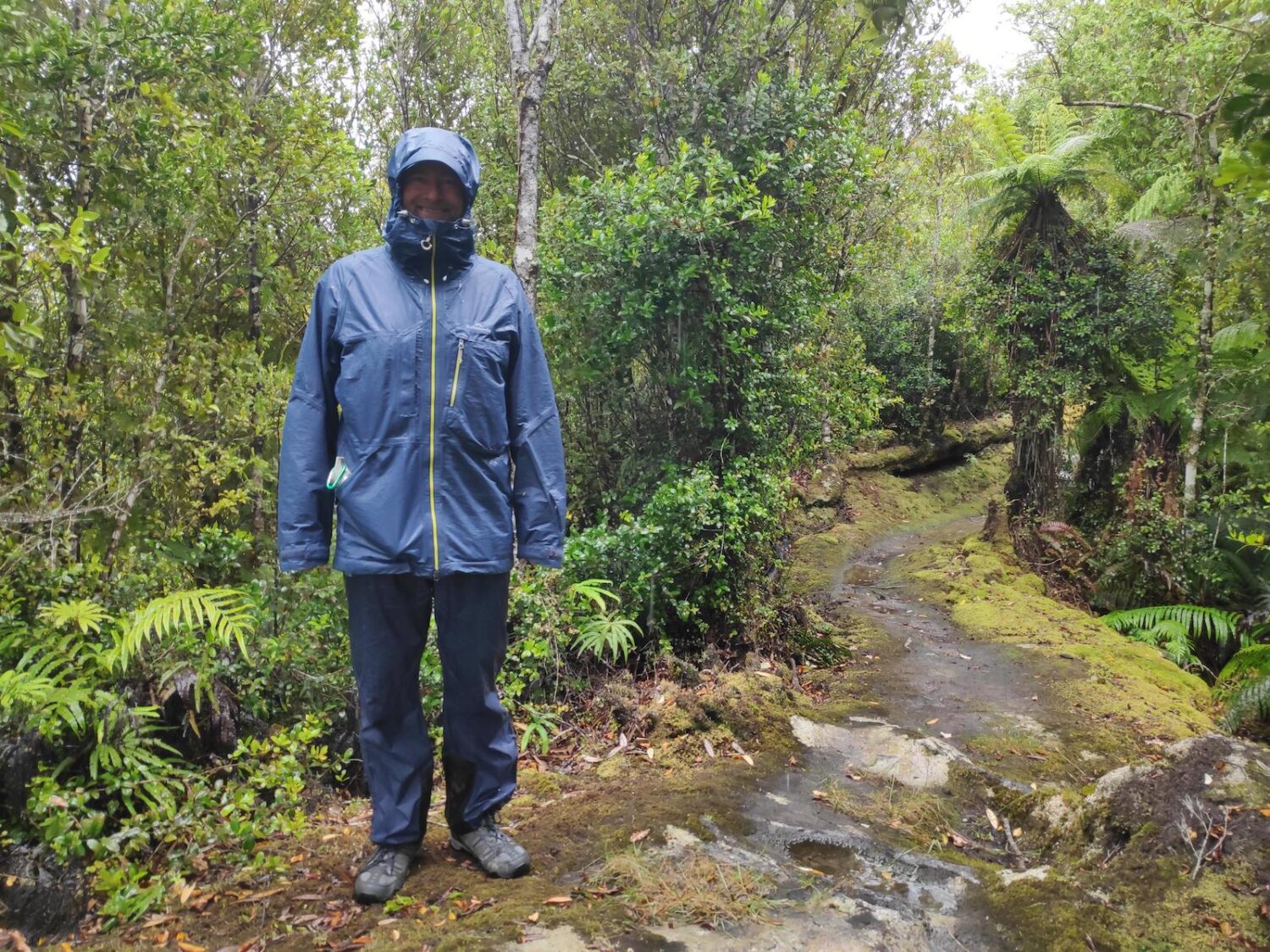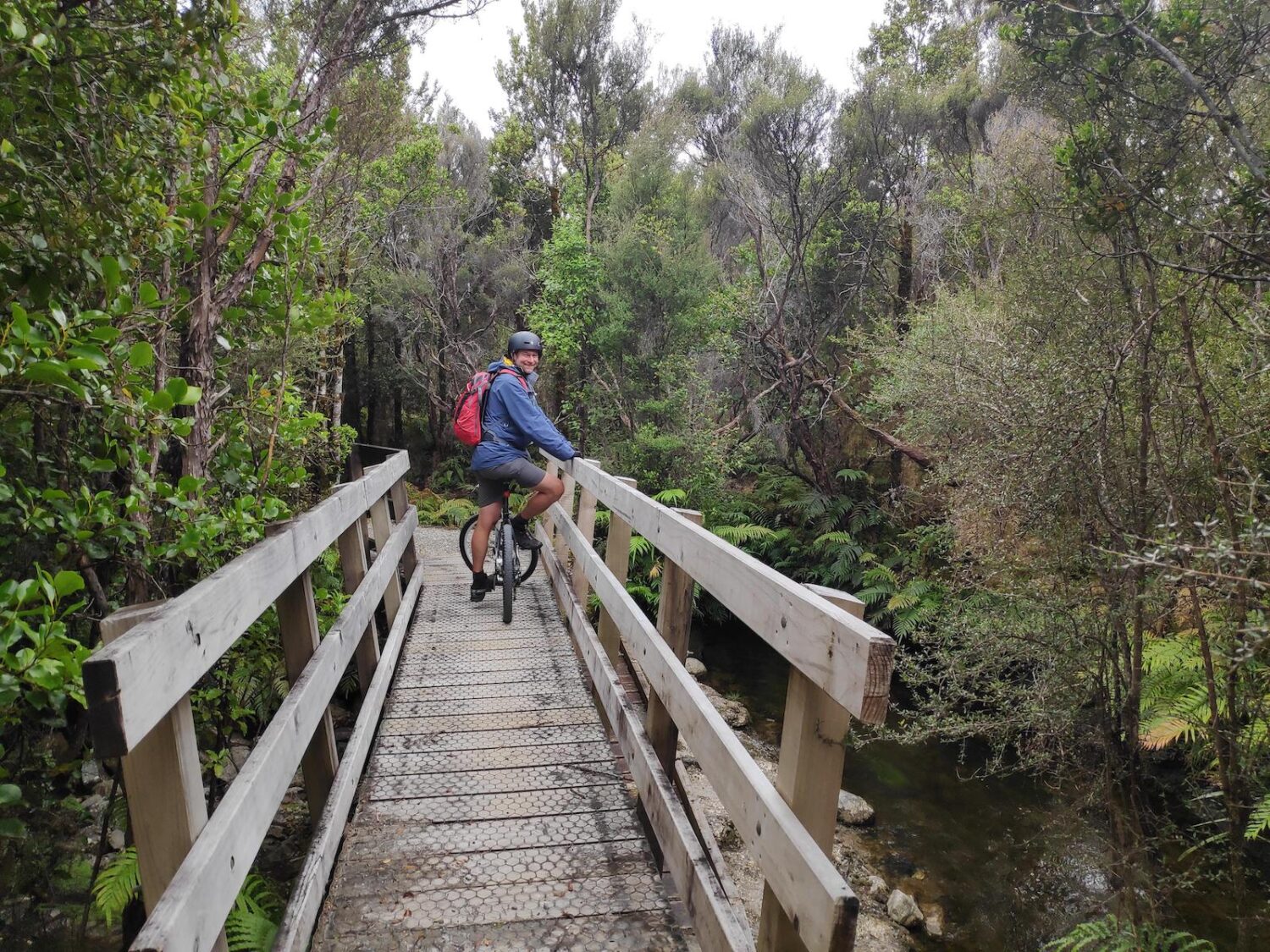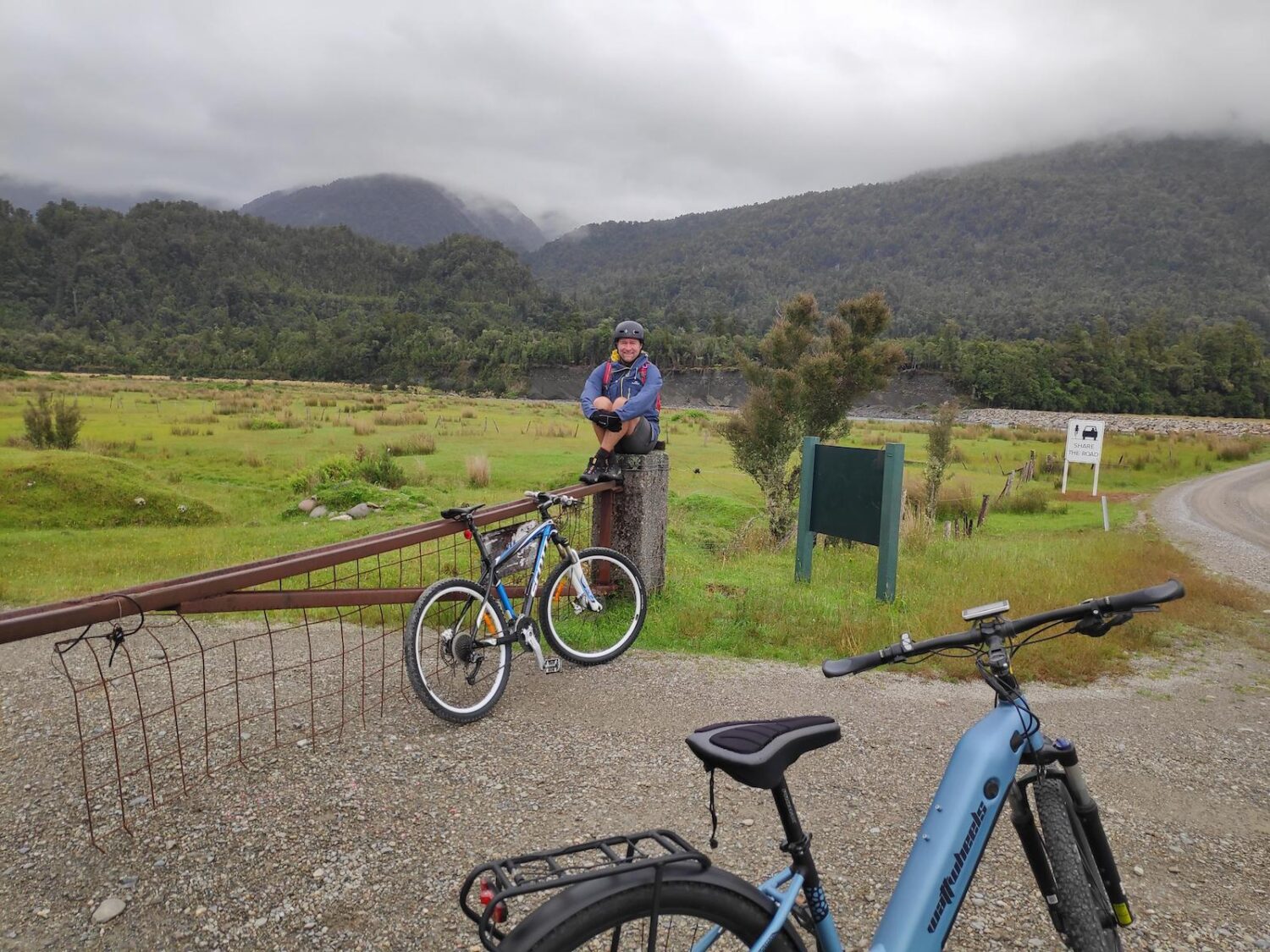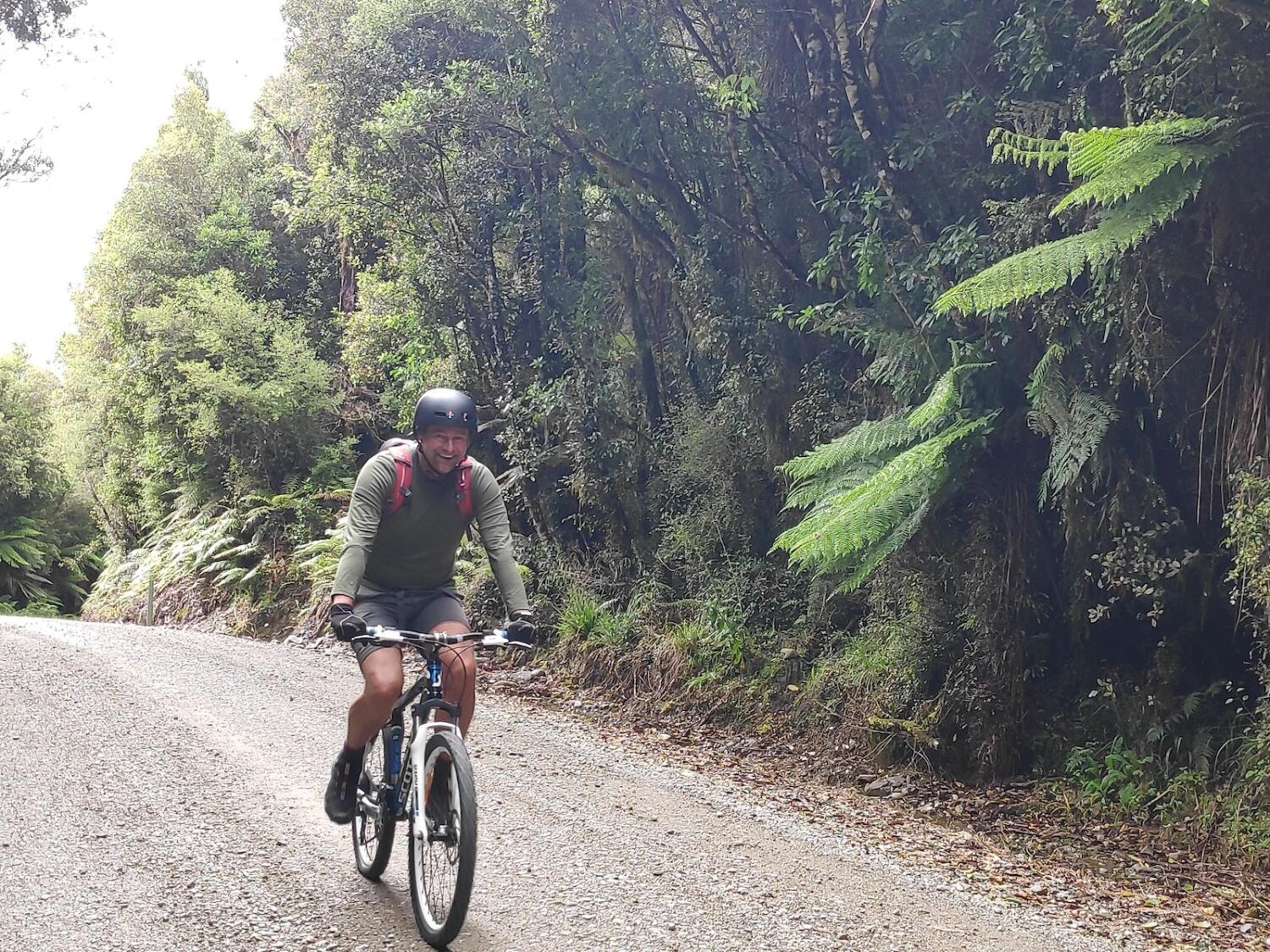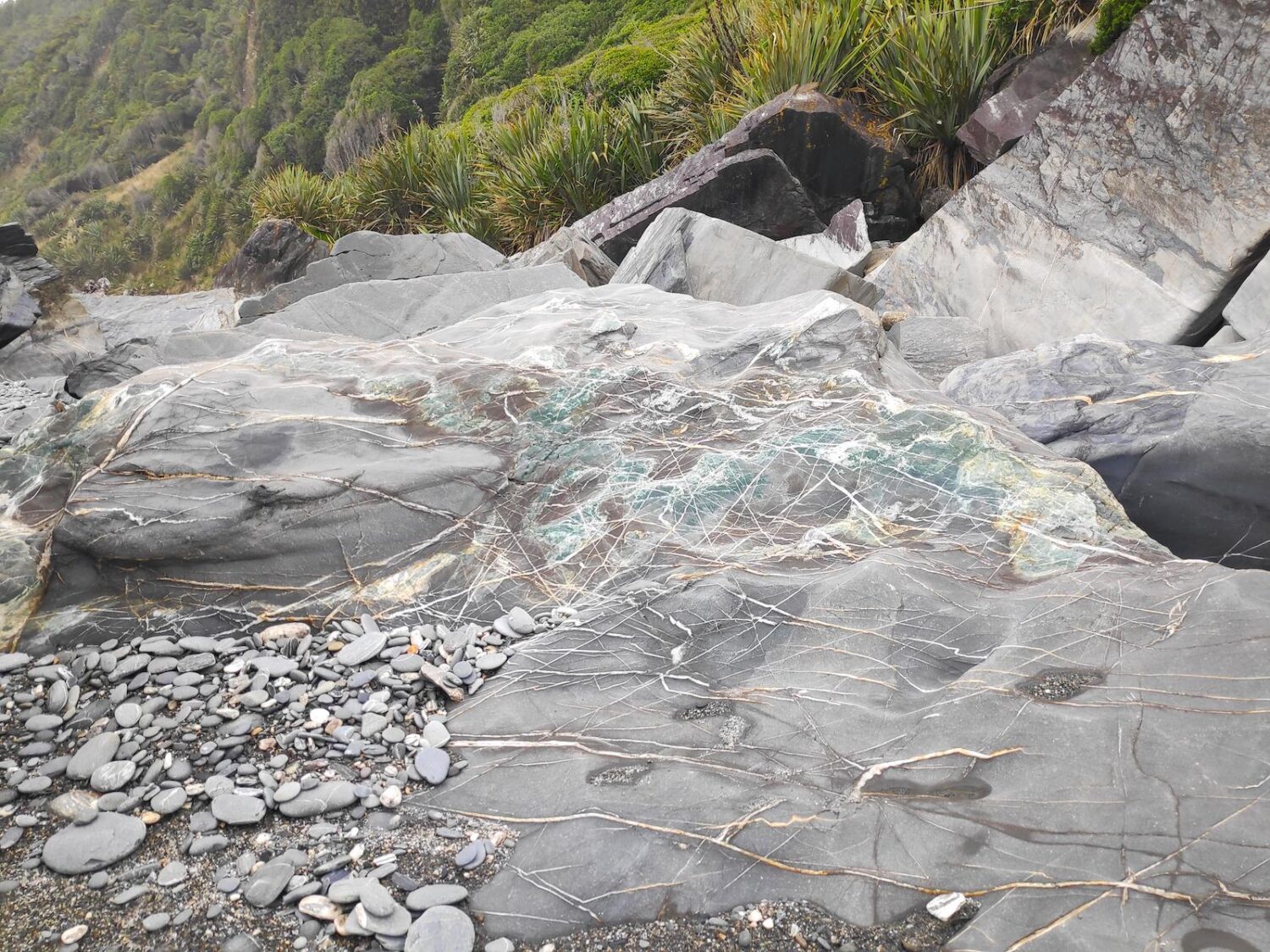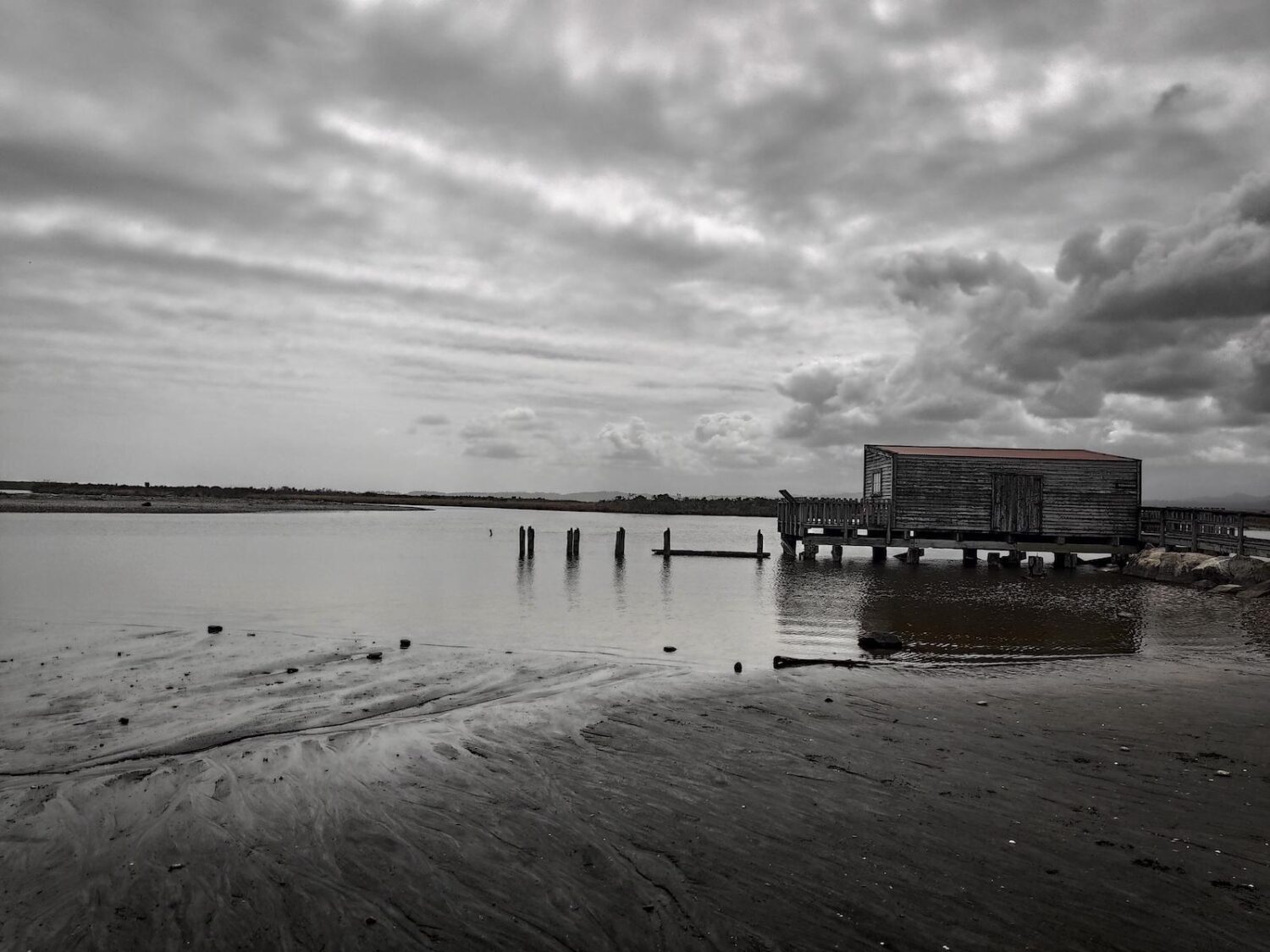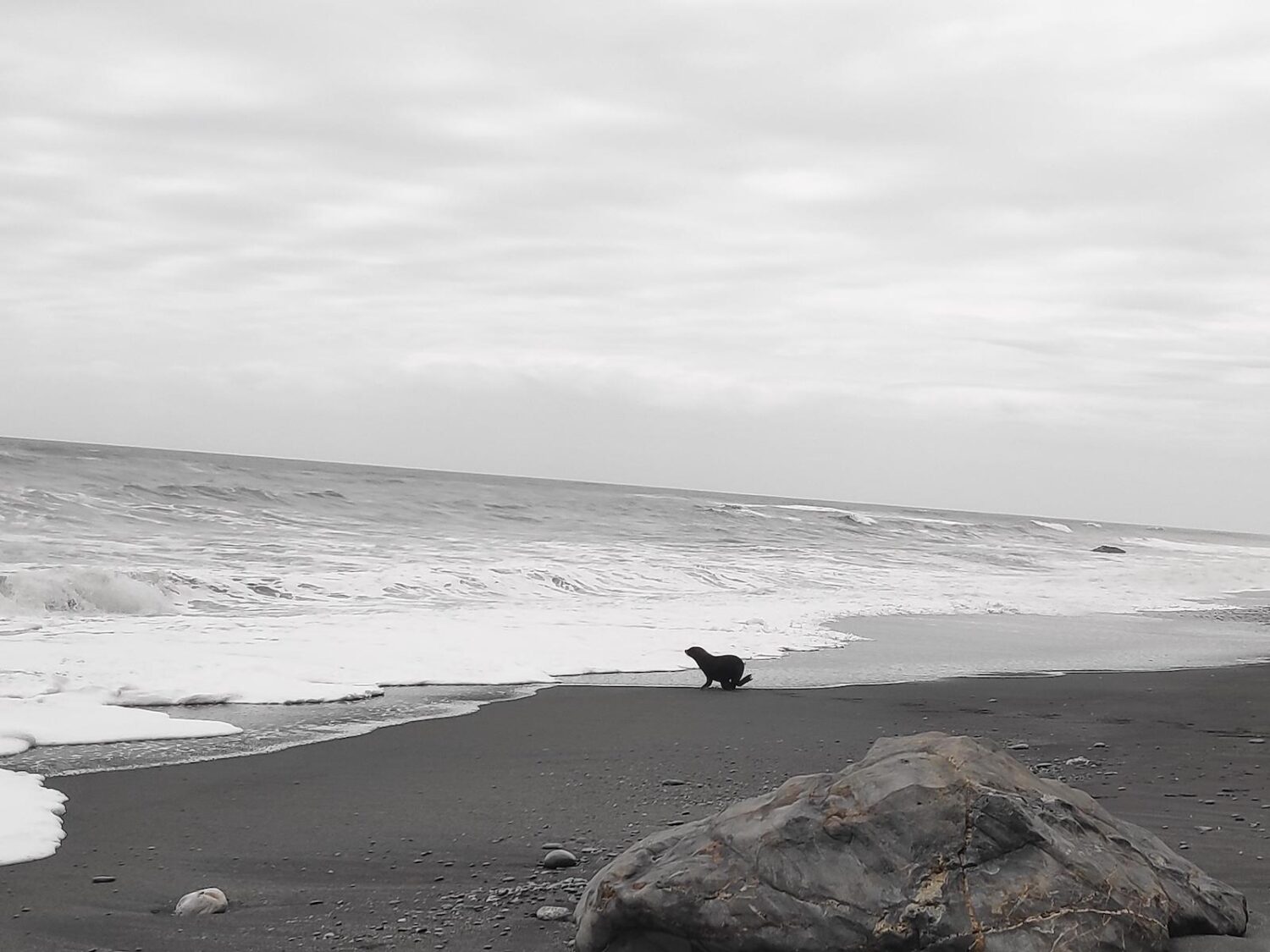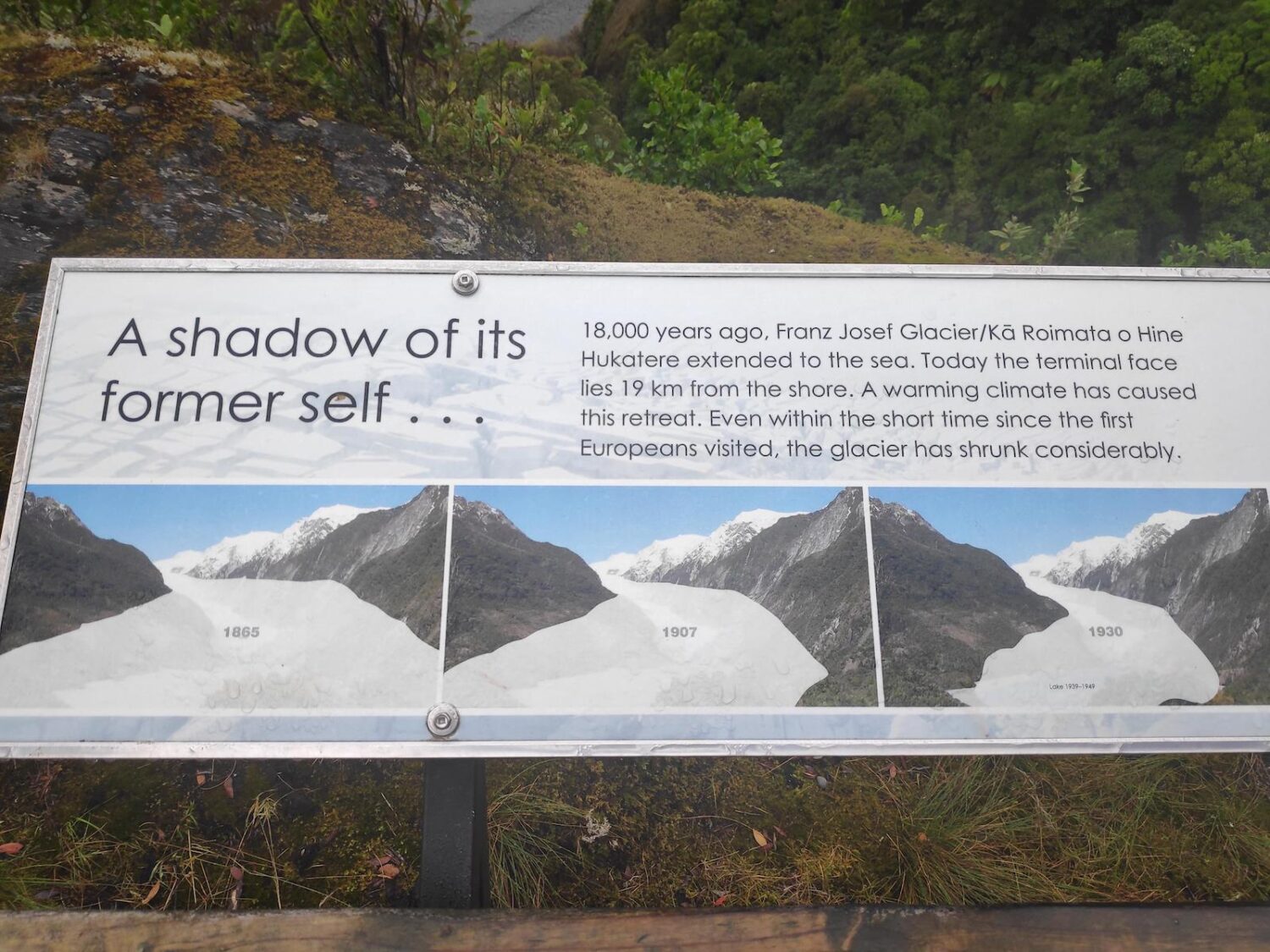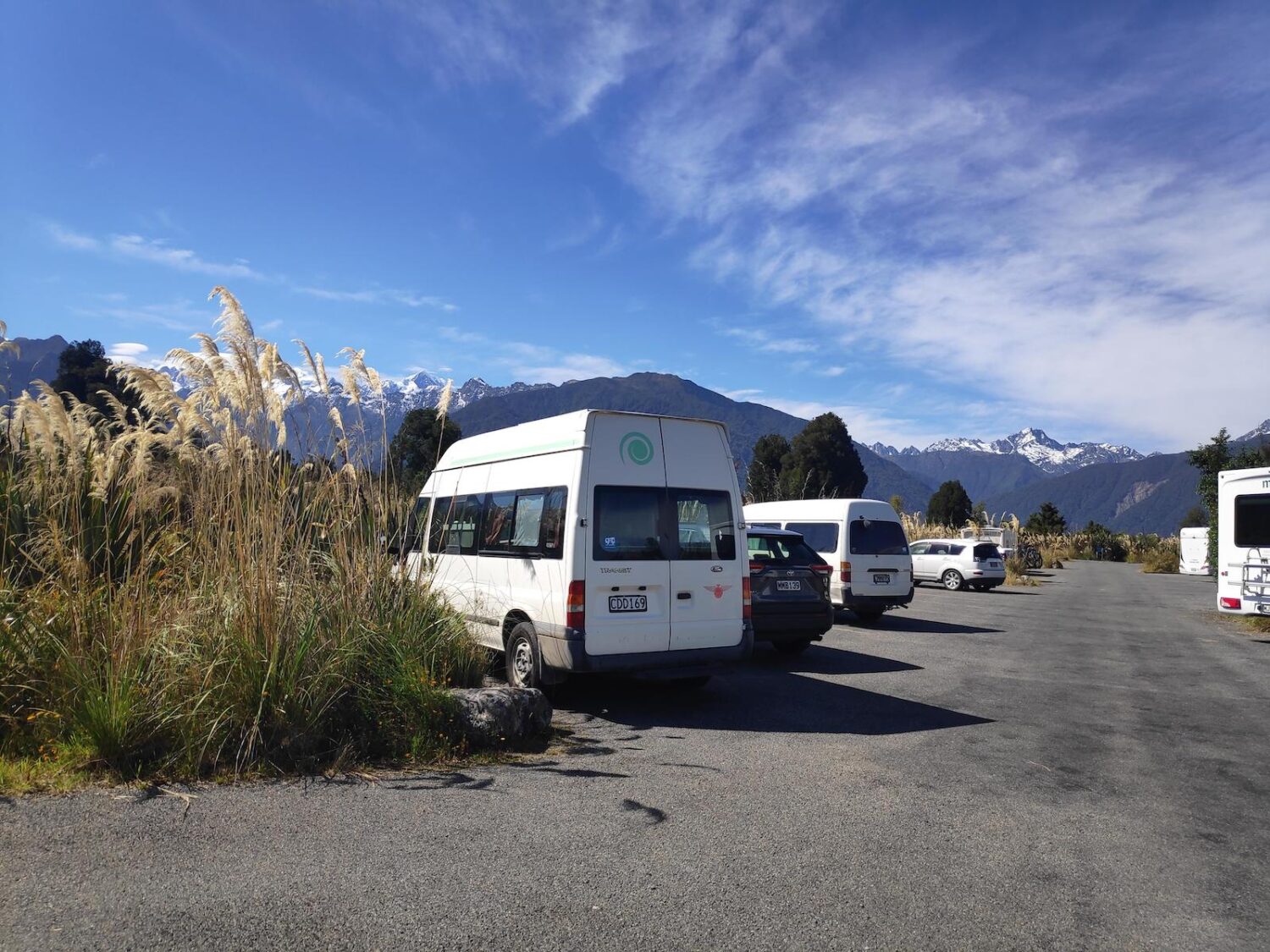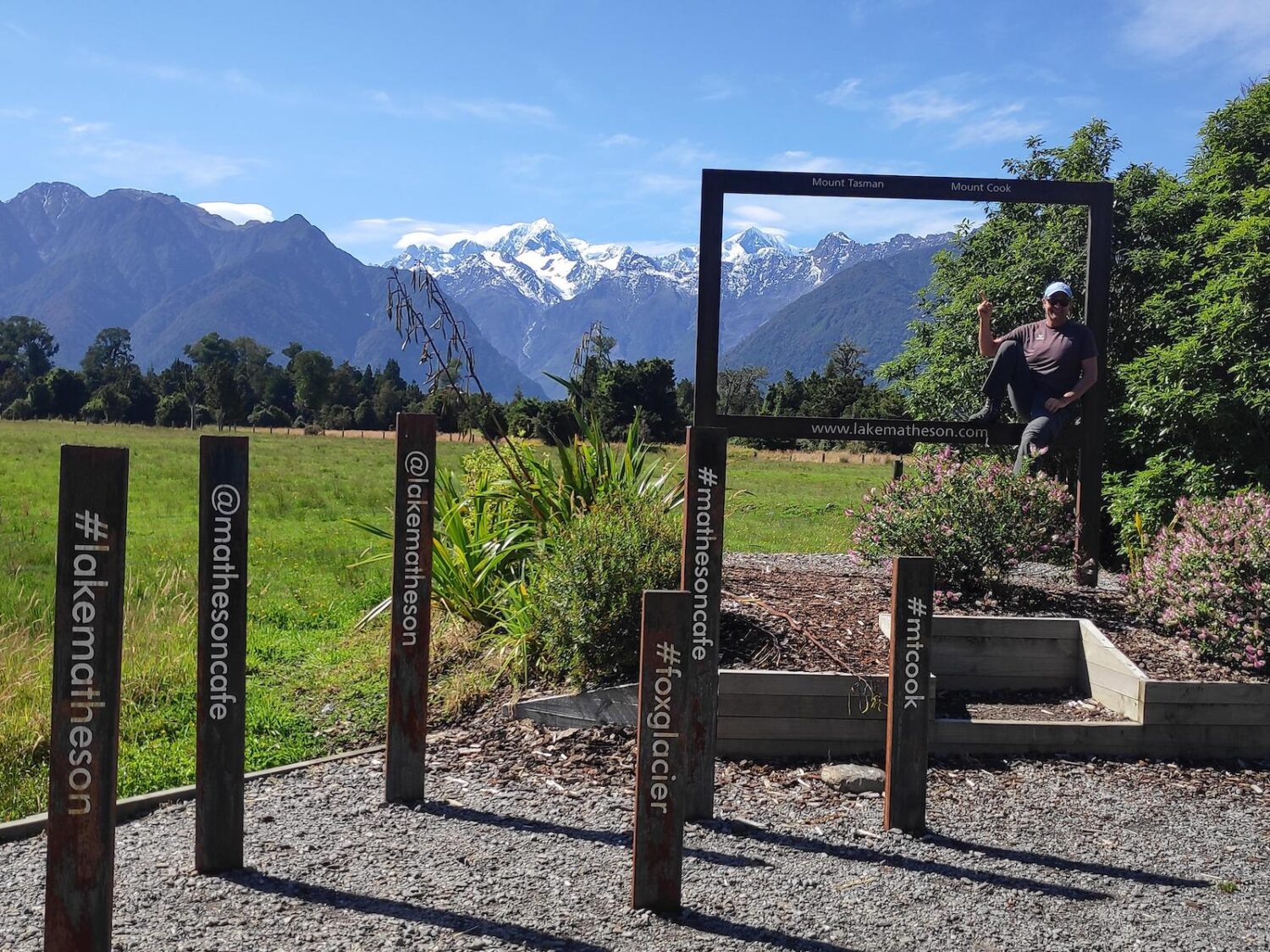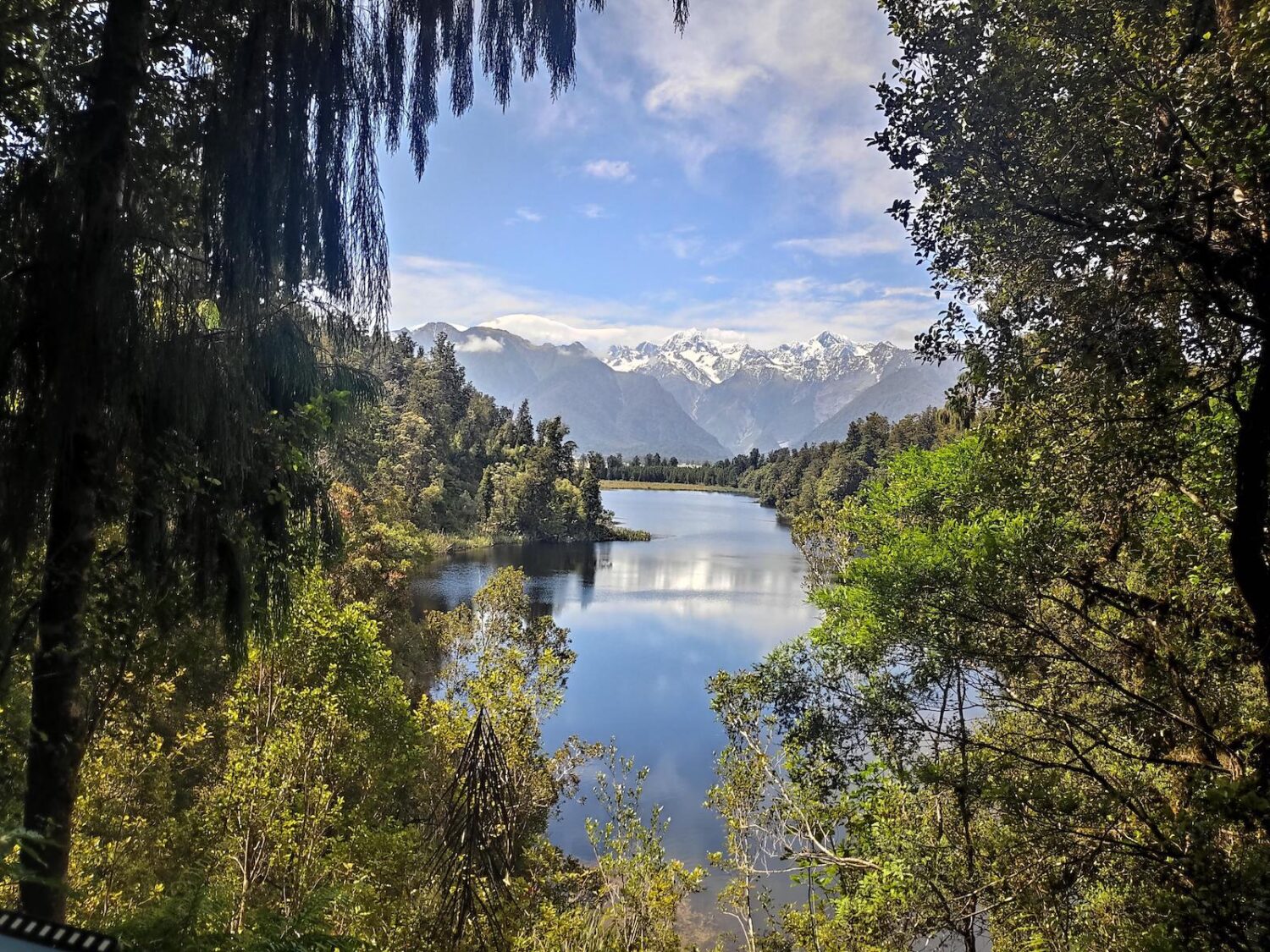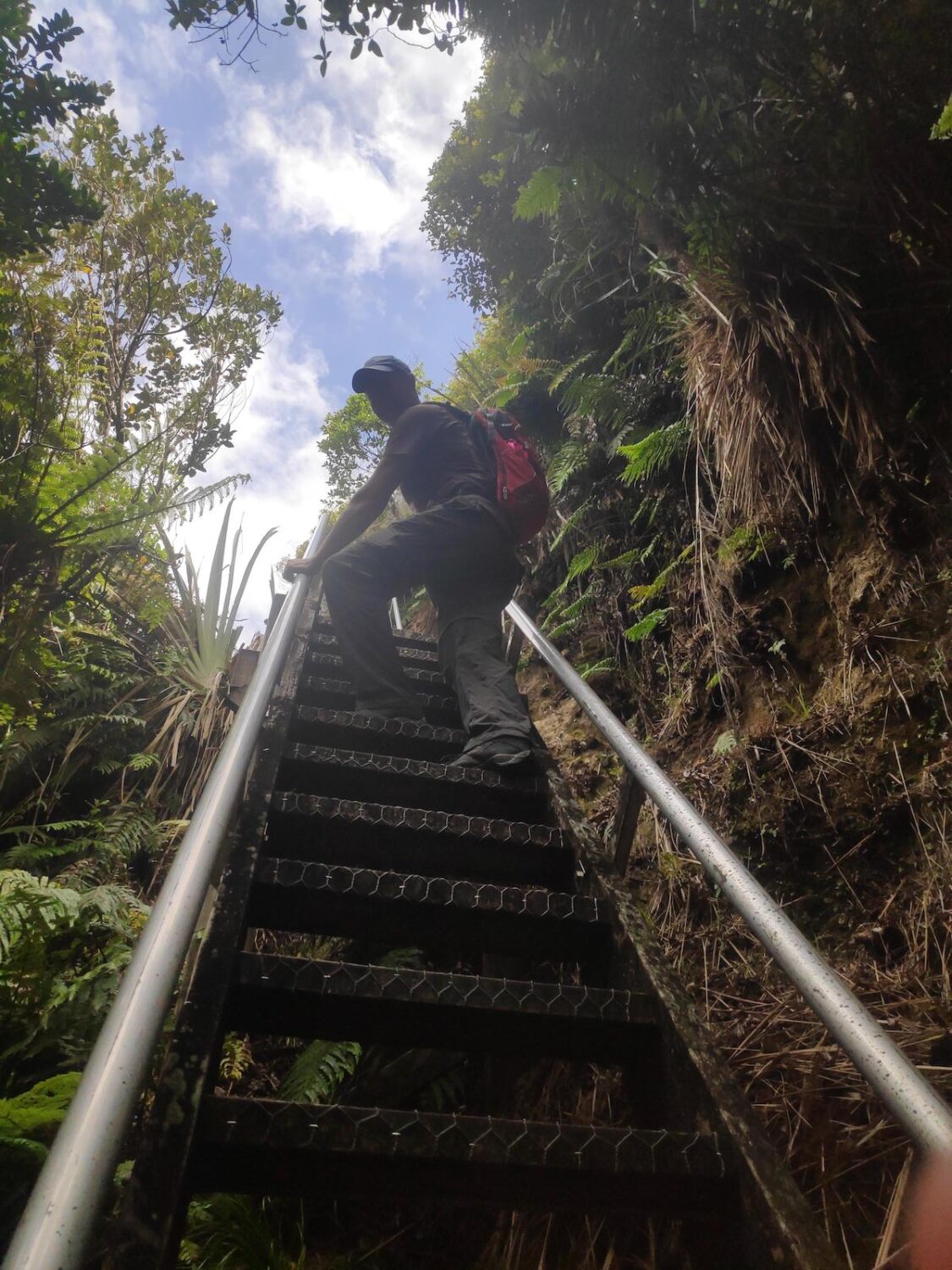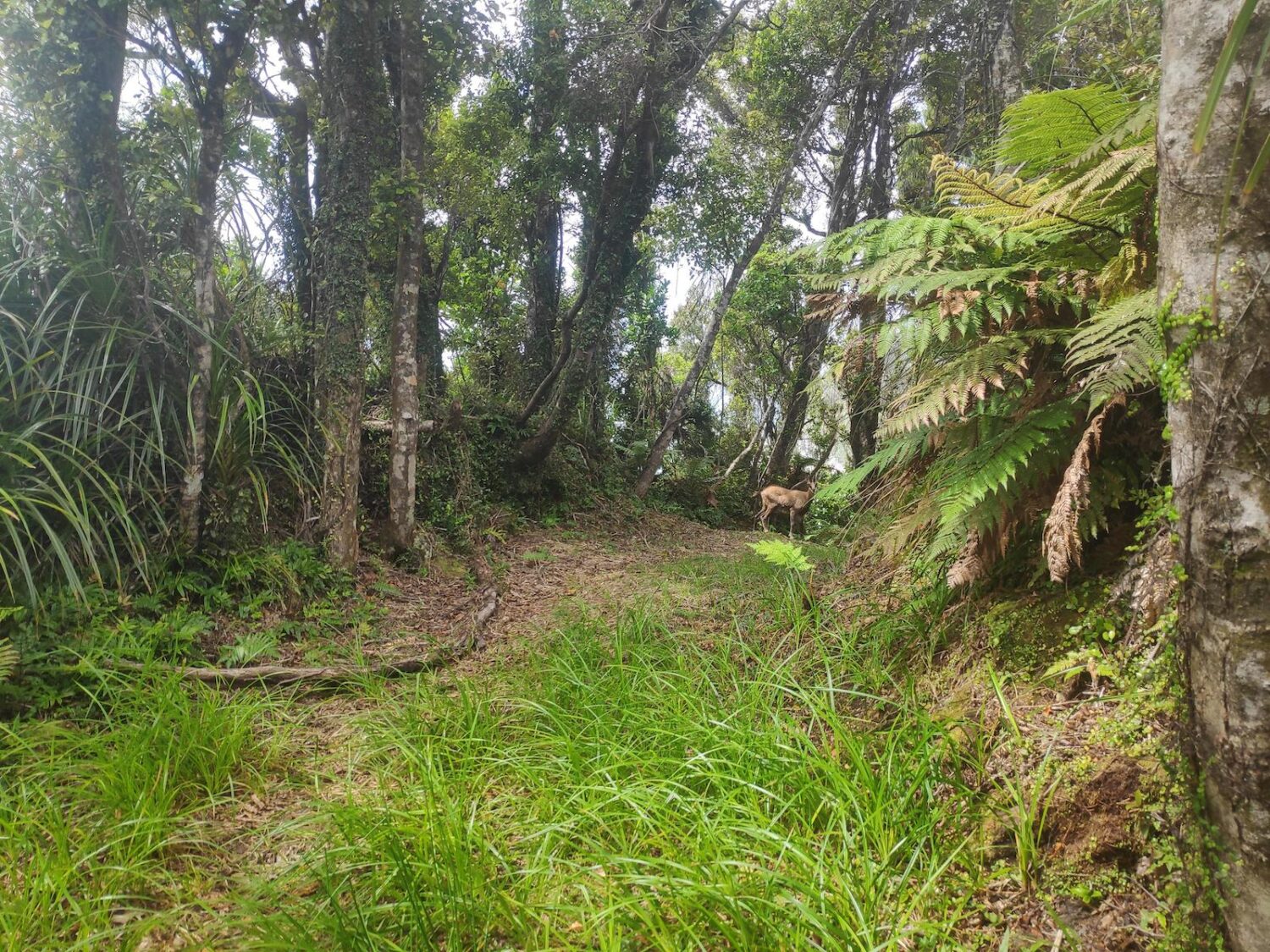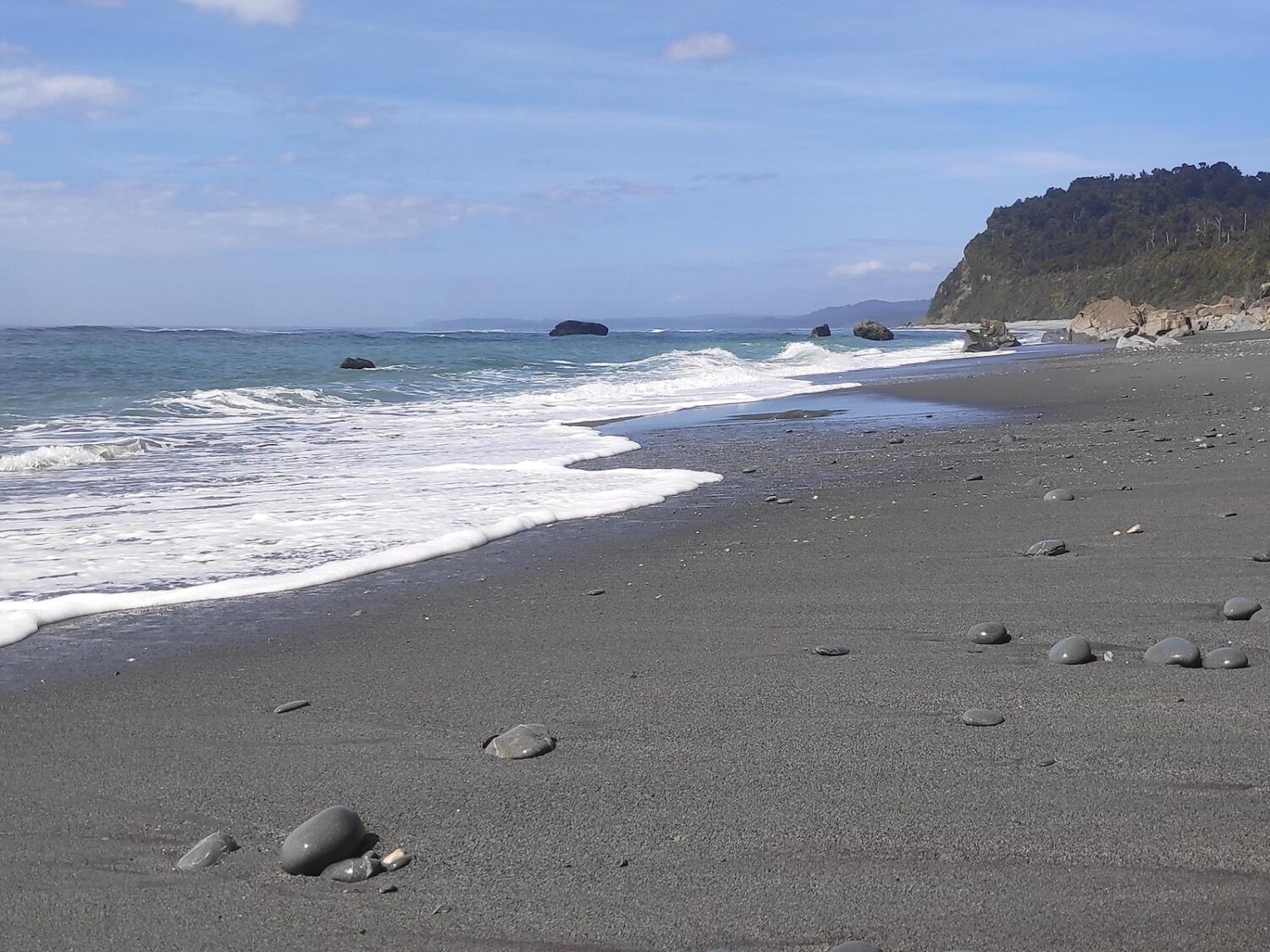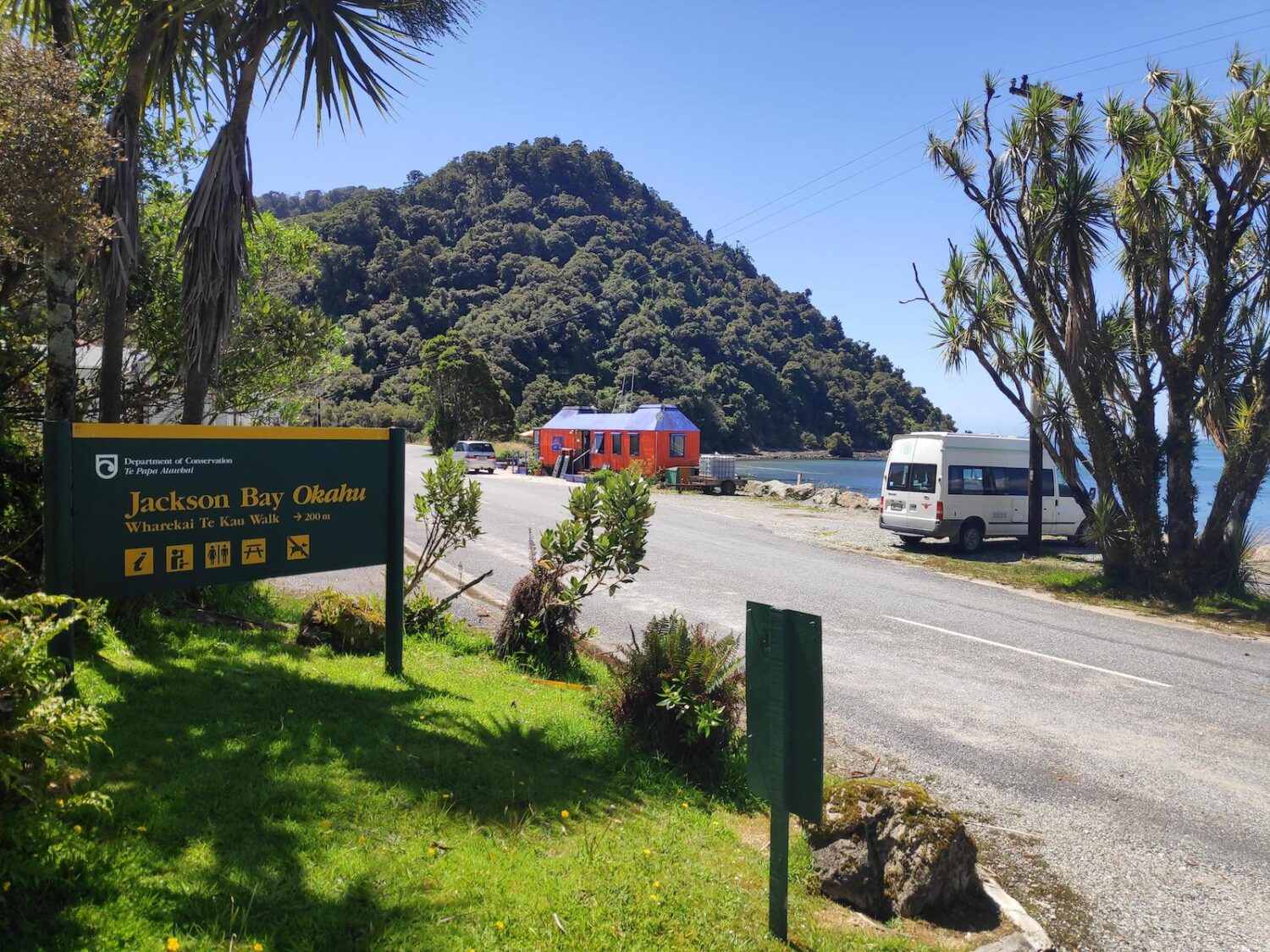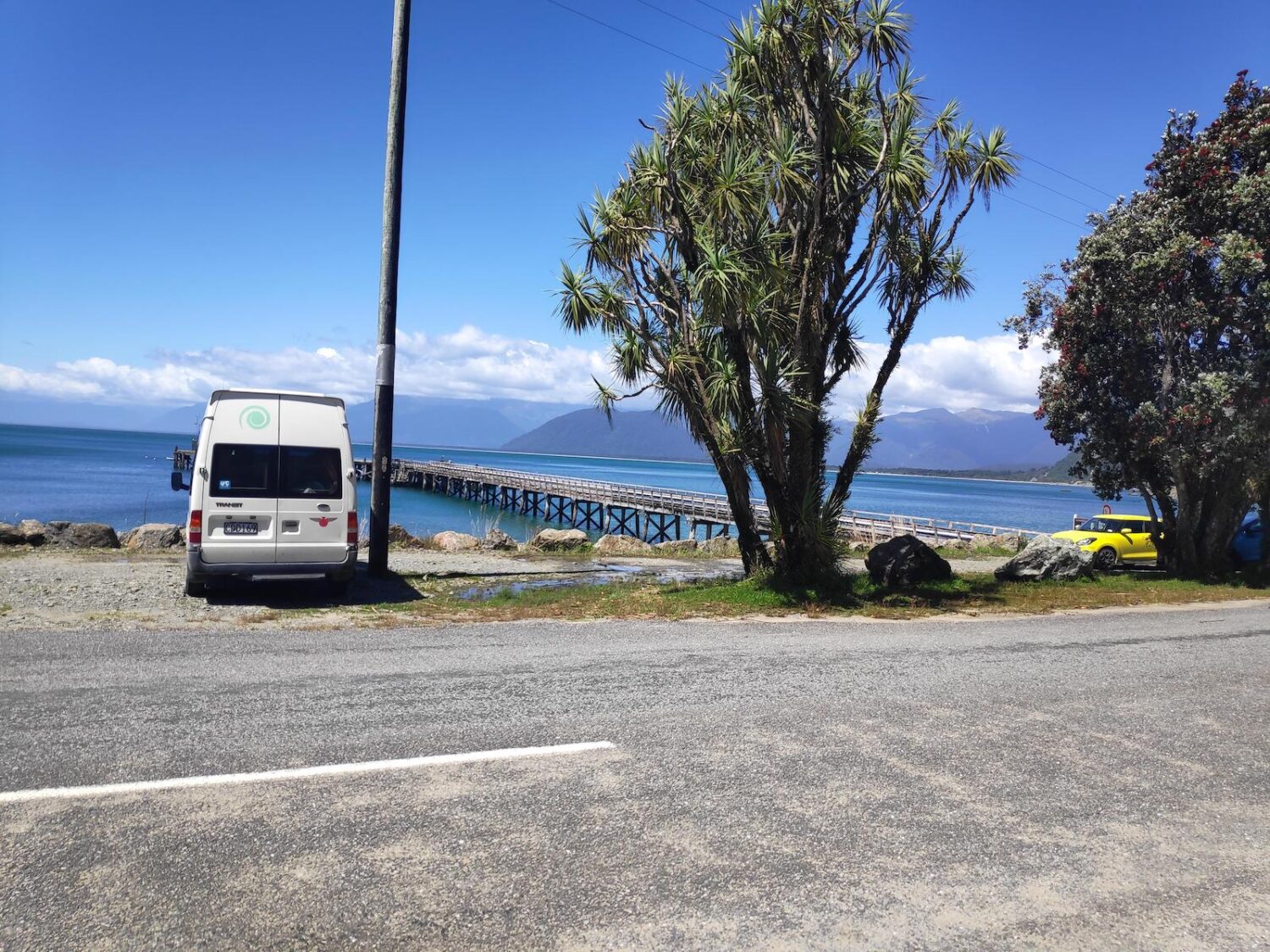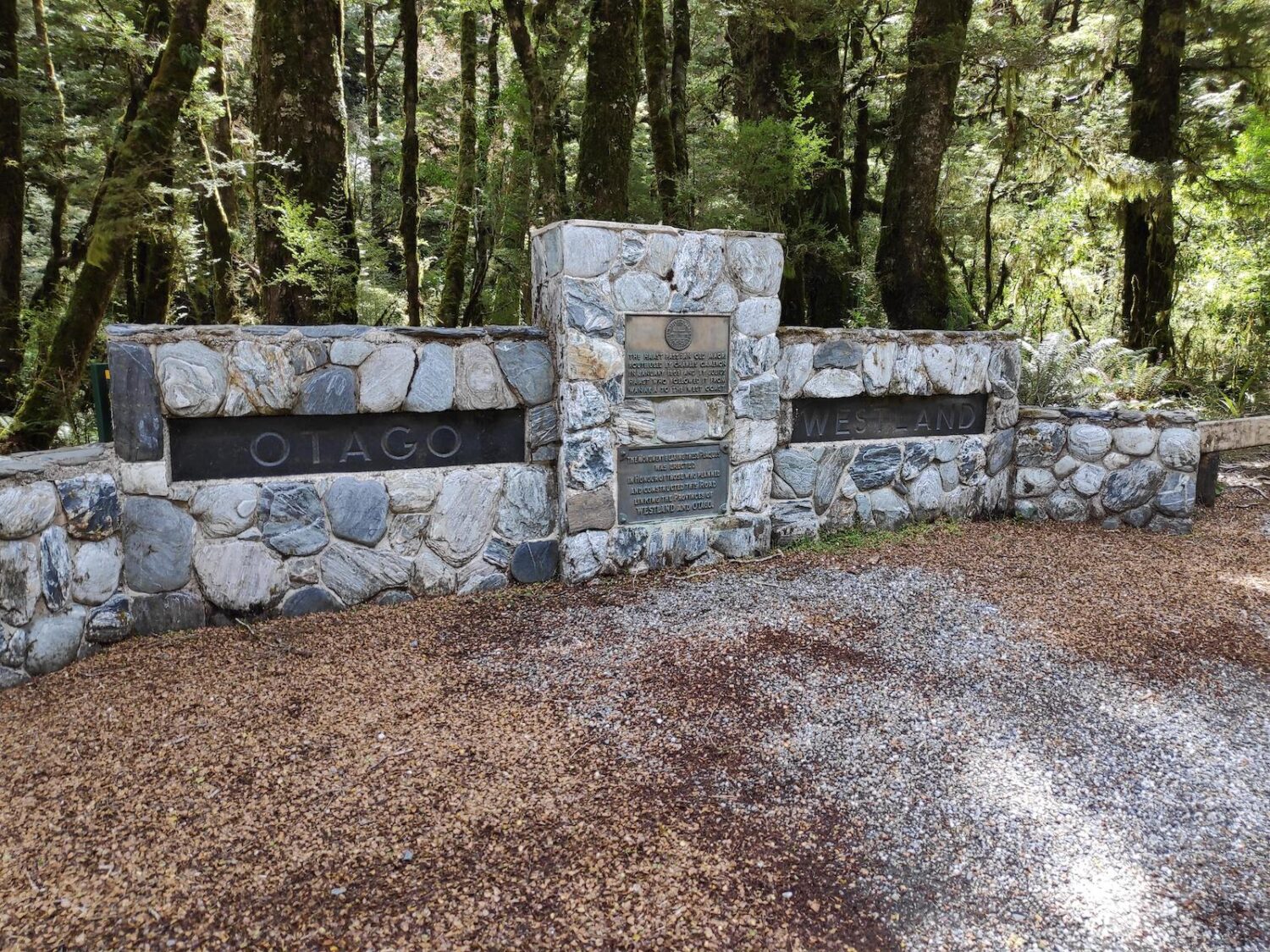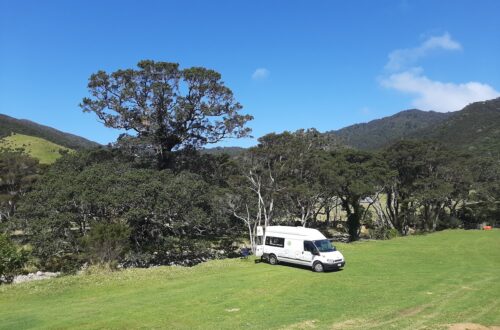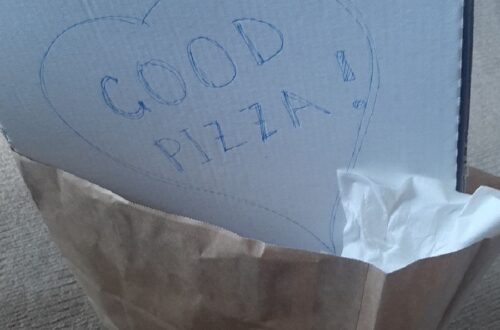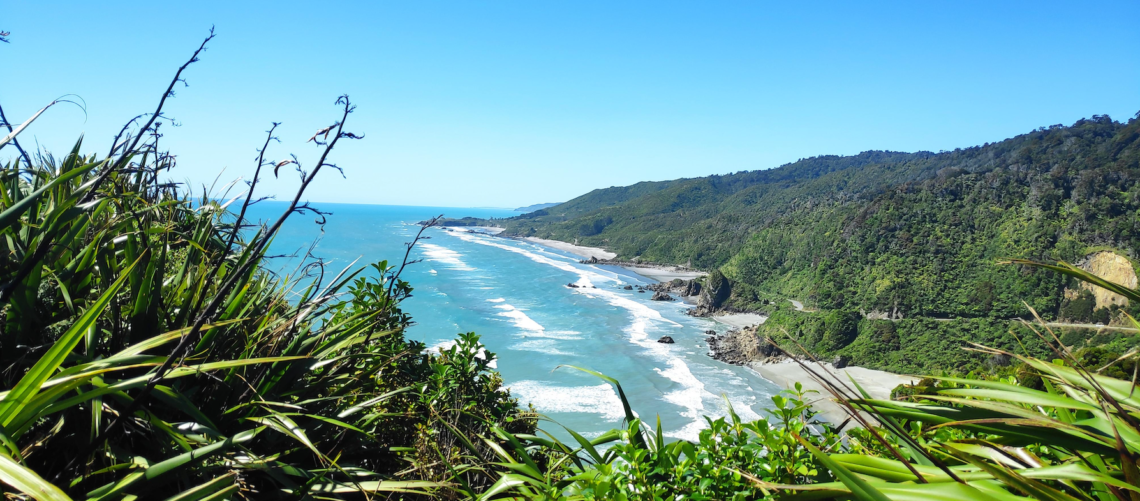
Wild, Wild West
One of the many advantages of our unplanned slow and steady campervan adventures through New Zealand has been to explore parts of the country that we haven’t visited before, or that we have not spent much time in. After spending Christmas at the Nelson Lakes, we headed west to see the New Year in. We chose a pub as our New Year stopover, parking at the Seddonville Tavern’s car park overnight. It proved to be quite a sedate way to see the New Year in. We met some new campervan friends, chatted with some locals and then, after a quick meal from a menu that consisted only of fried food washed down with a few beverages, we headed to bed by 10 pm. (Though Bryan claims I am exaggerating and it was no later than 9 pm!). Not quite the wild west and very different to our last New Year’s Eve spent shoulder to shoulder with thousands of Indians, a burning effigy, and a crazy tuk-tuk ride home at 3 am singing English classics led by our exuberant Tuk-Tuk driver through the choked streets of Cochin.
Our early night did mean that we could start New Year’s Day with clear heads and our location gave us our first taste of what the West Coast had to offer. We set off to walk along the Charming Creek walkway, which proved to be a fitting way to see in the New Year.
New Zealand’s great outdoors doesn’t get much greener, wilder, or wetter than the West Coast of the South Island and we made sure that we got to see as much of it as possible. In the northwest corner of the West Coast is the Kahurangi National Park, home to the town of Karamea and one end of the Heaphy Track, one of New Zealand’s Great Walks. The full track is just over 78km. We had walked 20kms of it from the Collingwood, Golden Bay side a month earlier. This time round, we managed an impressive 32 km from the Karamea side. We hadn’t intended to walk 32km but that’s what happens when you don’t define boundaries well enough with Bryan! Our initial destination for the out and back walk was one of the shelters along the nikau palm-lined track but, before we knew it, we had reached the 1st hut – 16km from our starting point which, of course, then meant we had a 16km walk back to Cyril (our Campervan) waiting for us in the beautiful Kōhaihai campsite. This is still our record for the furthest distance walked in one day, and a record I hope we don’t break any time soon!
We discovered some gems of campsites as we moved south along the West coast. One of my favourites was at Denniston. 600m above sea level it was quite a drive up to reach the Denniston Plateau. For decades it was one of New Zealand’s largest producing coal mines, operating from 1879 until 1967, and now is a fantastic heritage site. We spent two nights at the top of the plateau, with clear views the first night and then a fog descending on the 2nd that was so thick you could barely see your hand in front of your face. Bryan did find the plateau handy for a spot of yoga headstand practice though!
Heading down the West Coast, we made an overnight stop at Fox River. This was a great freedom camp site at the start of the Ballroom Overhang Track in the Paparoa National Park. We had also chosen the site as a regular feature there is the Pancake Man – a guy with a food truck that rocks up every morning. We were hoping he was still going to be there when we got back from our walk, so I had asked him how long he would be there. His reply, “until an hour after my last customer or until I’ve had enough”. Sadly, he was gone by the time we got back so never did get to try the pancakes, though the walk more than made up for it. It was more of a swim than a walk in some parts, with fast-flowing water up to our knees in parts. The water did look inviting though. Bryan decided to take the plunge, quickly realising this was not a good decision as the water was painfully cold. I ignored his cries of “hurry up” as I took my time getting the blog-worthy photo. You have to make sacrifices for a good photo!
Less than an hour down the road was Punakaiki, home of the Pancake Rocks and the link to pancakes in the area (remember the Pancake Man!). These limestone rocks began forming 30 million years ago and are an incredible sight to see. There is a short walk through them, including the chance to look down into a couple of blowholes and surge pools in which there is some thick kelp that looks like Medusa’s snake-like hair slithering through the water.
We headed back into the Paparoa National Park to walk the Pororari Track Walk. It was a beautiful day and one of our favourite walks, walking alongside the Pororari River with quite a few swing bridges along the way. Our lunch stop, and turning around point, was under one of these with a few eels keeping us company as we cooled our feet in the water.
We passed through Greymouth to refuel both ourselves and Cyril, including a beer tasting session at Monteith’s Brewery before heading to the small town of Hokitika. Sometime back I had downloaded the book “The Luminaries” set in 1866, New Zealand. I had struggled to get into it and, unusually for me, had given up after the first chapter. It turns out that the book is set in Hokitika, back in the high days of its gold mining history. This has given me a renewed interest in the book, and thankfully so. I am now halfway through and thoroughly enjoying it.
Thirty minutes drive from Hokitika is the Hokitika Gorge and the turquoise blue water that has to be seen to be believed. The 90m suspension bridge gives views into the gorge and the lush forest that surrounds it. The blue colour is a result of it being glacier-fed, where ground rocks are held in suspension in the water. Something we would see more of later.
Till now, it had been perfectly dry, balmy sunny weather. But it was time for the West Coast to become the Wet Coast and it proceeded to rain consistently for the next 5 days or so. It does, after all, have some of the highest rainfall in the world. We even had a downpour of marble-sized hailstones! With so much wet weather, our opportunities for walks were greatly reduced, we did still get to Lake Kaniere and then across to Lake Brunner where we had a very soggy walk and an opportunity for my waterproof boots to prove that they weren’t waterproof at all!
Back in Hokitika, a break in the weather gave us a chance to take to two wheels instead of two feet as we hired bikes for the day. Bryan went hardcore on a regular mountain bike, but I took it easy with my first go on an e-bike. It meant we could be evenly matched for most of the ride, though I was probably a bit overzealous as I whizzed past a puffing Bryan on some of the steep uphill sections laughing at his exertion as I went – thankfully he was still smiling at the top! Neither of us were laughing at the end. Turns out, E-bike or not, you still get a sore backside at the end of a 35km ride!
The wet weather bought with it another issue. Mosquitos – and swarms of them. We were camping overnight just outside Hokitika next to Lake Mahinapua and I had been woken a few times by the buzzing of a pesky mozzie or two. They were getting so annoying that mid-way through the night I had switched the light on to try and swat them, only to discover that the van ceiling was swarming with the damned things. Even after we moved on to different overnight campsites, we faced the same problem night after night. We never did quite work out where they were getting in but did eventually manage to get rid of them all after many sleepless nights.
After days of wet weather and limited opportunities for long walks, it was great to be back on foot for the Okarito Coastal Walk. Okarito was another NZ gem steeped in history. Today it only has around 30 permanent residents but was once part of the gold mining boom. Looking out over the flats from the small boathouse that also serves as an information centre, it had quite a moody, dark feel about the place. The coastal walk was just a short walk by our standards, just over an hour but gave us another sighting of seals on the beach and some amazing quartz rock formations and naturally formed driftwood sculptures along the way.
We were now firmly into Glacier country, visiting Franz Josef and then Fox Glacier in South Westland. It was really disheartening to see how far the Glaciers have receded, not least since we recalled our visit there with the kids in 2007 and could see a noticeable difference even since then. Even the signboard described the Franz Joseph Glacier as “a shadow of its former self.” It was also sad to see that in February last year 20 tourists were rescued in the Franz Glacier valley after ignoring “stop, do not enter signs” and were trapped by rising water. Presumably trying to get a better look at the receding glacier. Ironically stupid behaviour for sure and makes it hard not to despair of human nature at times.
One area that did give a chance to appreciate the beauty of the Southern Alps at safe distance was our walk around Lake Matheson which is famous for its reflected views of Mount Cook and Mount Tasman. Fortunately, the weather was exceptionally kind to us that day, back to clear blue skies, sunshine, and not a drop of rain.
While the weather was good, we also took a trip out to the coast to Gillespies Beach and another lovely walk along the coast. It was quite a boggy walk in some places but the deer we spotted along the way and the seals on the beach at the end more than made up for it.
Yet another wildlife gem was at Munro Beach, near Lake Moeraki, where we got to see a couple of the rare Fiordland Crested penguins. You will have to take our word that we saw them as they are barely visible on the photos we took due to the distance we needed to keep from them. This is the time of the year when they stay onshore as they moult their old feathers. If they get scared the risk is they head for the sea and would drown, so we just caught a glimpse from afar.
From here, we headed as far down the West Coast as the roads would allow, getting as far as Jackson Bay just past Haast. This is literally the end of the road with no other route to take us further. So, at this point, we reluctantly turned East across the Haast Pass ending our month-long journey along the West Coast. Despite the wet weather, the sandflies and the mosquitoes, the West Coast offered us so much to see, do and enjoy. Now we were heading into Otago, the driest part of the South Island and yet more dramatic changes in the landscape.
Like and follow us to be notified of future blogs: http://www.facebook.com/ripeningnicely


